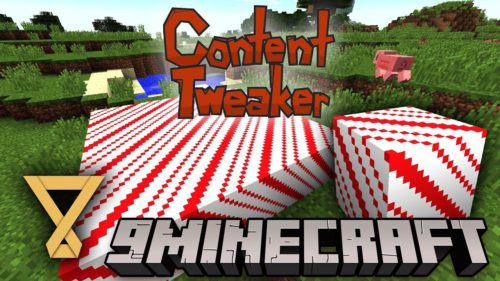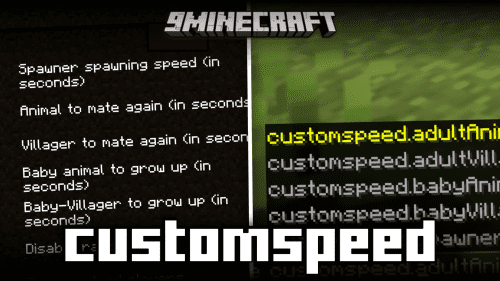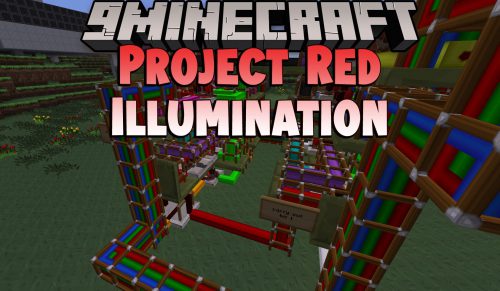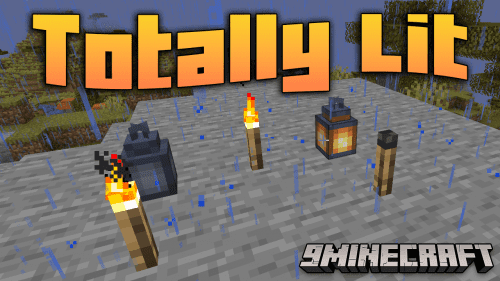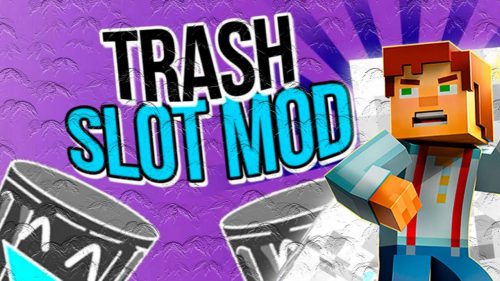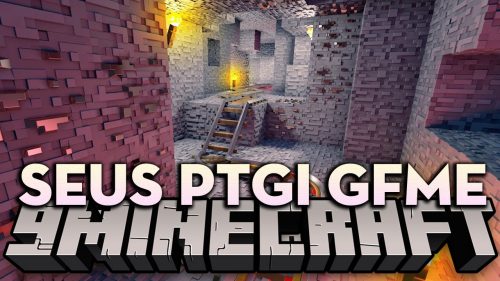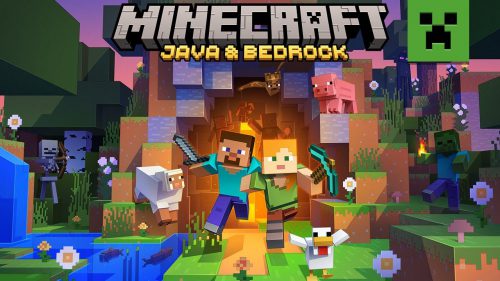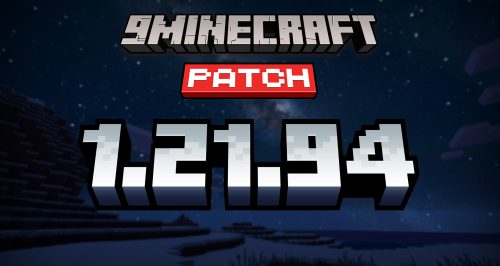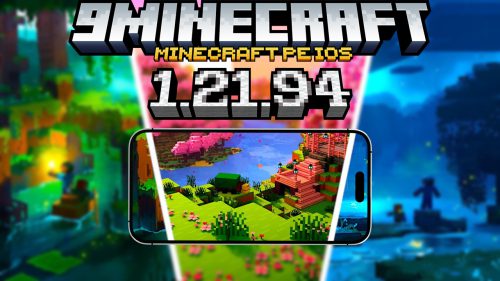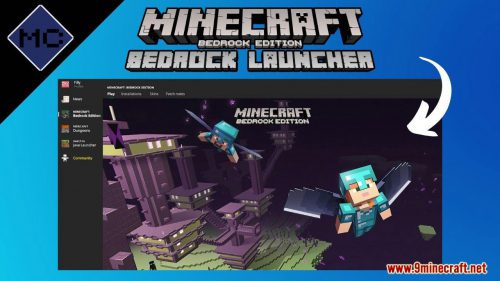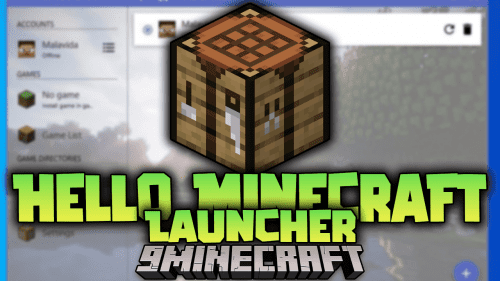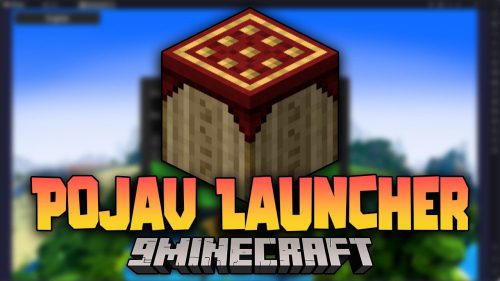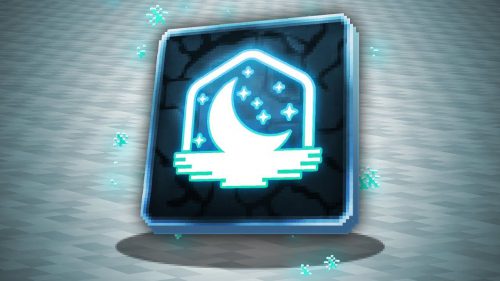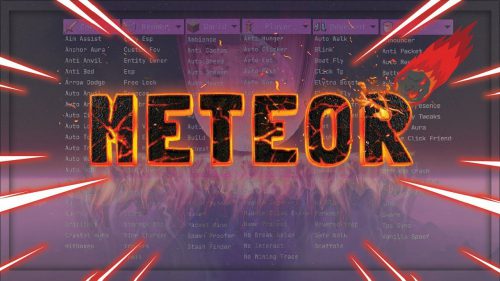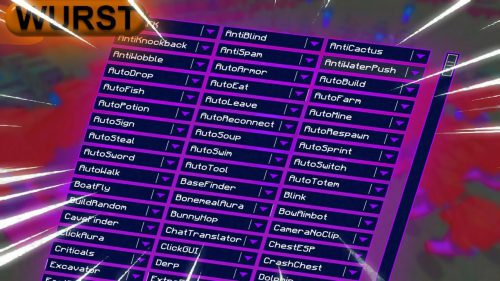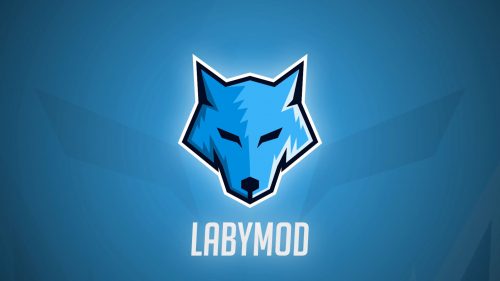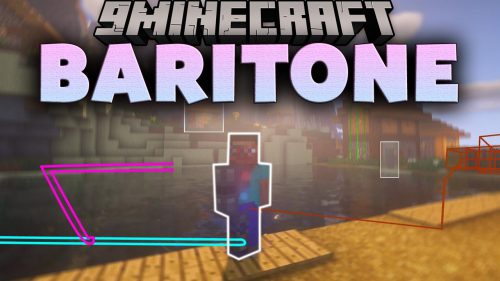Homepage » Minecraft Mods » NetherEx Mod (1.21.4, 1.12.2) – Expansion, Exploration, Experience
NetherEx Mod (1.21.4, 1.12.2) – Expansion, Exploration, Experience
NetherEx Mod (1.21.4, 1.12.2) adds new biomes to the Nether. It also allows other mods to add their own biomes to the Nether. NetherEx is a large reworking of the Nether, focused on three core ideas: Expansion, Exploration, and Experience.
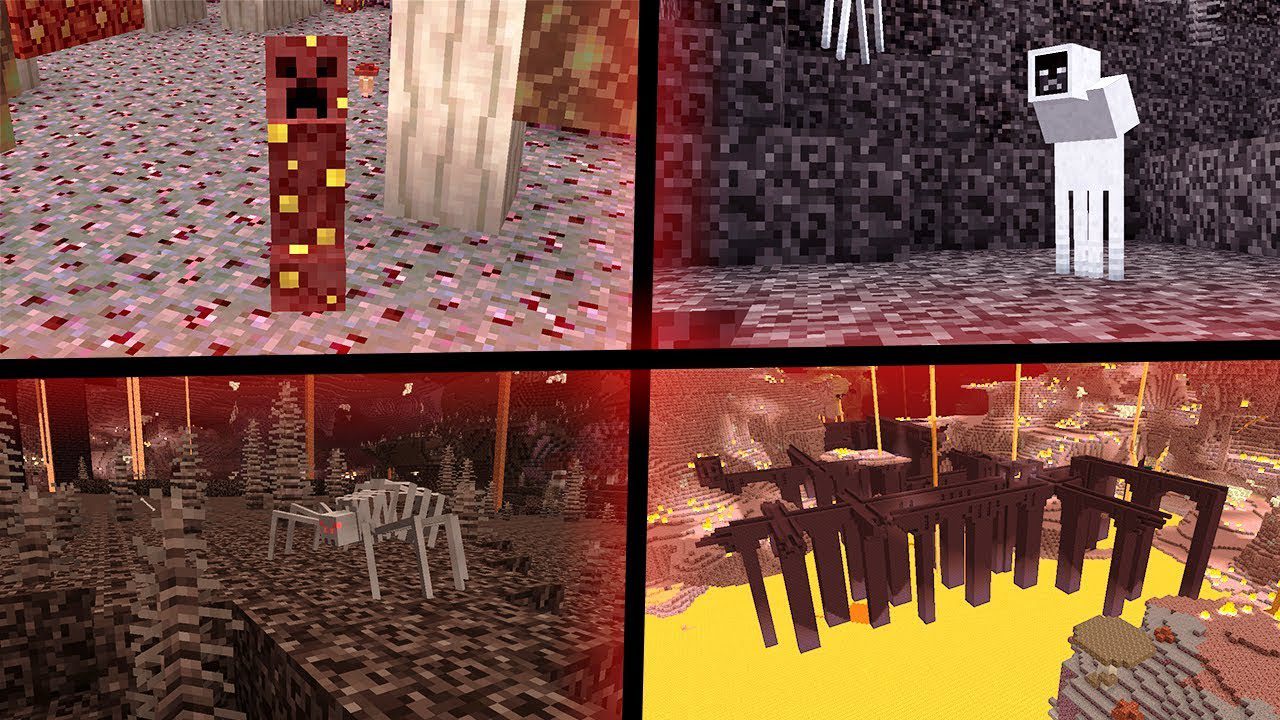
The mod currently adds four new Nether biomes, each is designed to fill a specific purpose within the Nether and each has a unique approach to the others. These biomes are populated by ten new mobs, decorated by 34 new blocks, and filled with over a dozen new items to find and use.
Three new armor sets, a brand new set of weapons, and four new food items allow for pure Nether survival. Three new potions introduced in NetherEx gives you a lot more options for various approaches to fights. An all new boss is introduced for you to summon and vanquish. Sixteen new structures can be found and explored, these new structures include nine mini dungeons with more on the way. A new gem can be found that allows you to trade with the Pigtificates, which can be found in their villages hidden inside the Nether, guarded over by their faithful golems and ruled by a greedy chief.
Features:
Biomes
Ruthless Sands
- The darkest and most unforgiving biome of the Nether. The soul sand is corrupting the area, destroying villagers, inviting the most aggressive creatures to spawn, and ruining ancient sites. Dreary and dangerous, navigating this biome is slow and risky as everything poses a risk including the flora.
- While the dangers of the biome are fierce there are great rewards to be found here, as ruins of an ancient civilization left great treasures behind.
- The primary block is Gloomy Netherrack, with a top covering of Soul Sand.
- Structures include Quartz Altars, Ruined Huts and Waystones.
- Fifty percent more Quartz Ore spawns in the Netherrack of this biome then in any other, and many of the structures also contain quartz blocks.
- There is minimal Glowstone though which can make navigating more difficult as you cannot rely on being able to find Glowstone to use as markers as you explore.
- This is the only biome that can generate Thornstalks.
- Wither Skeletons and Spinouts are the primary mob spawns.
Torrid Wasteland
- Super-heated by the lava embedded in the rock and magma running through it, only the hardiest of creatures survive here. Fire is a constant risk, and even the netherrack has been scorched by the extreme heat and fire itself has formed living entities that don’t take kindly to trespassing.
- Fiery Netherrack is the primary block of this biome. Magma also spawns in pockets throughout the terrain.
- This is the only biome that generates NetherEx’s Basalt block which spawns in chunks embedded into the netherrack.
- Lava pockets buried in the terrain are more common, as is fire scattered across the surface.
- Normal amounts of Nether Quartz and Glowstone generation.
- Both types of Salamanders and Embers spawn throughout the biome, along with blazes which can appear.
Fungi Forest
- Fueled by the corruption of the nether and the intense conditions, living fungus has taken over vast sections of the dimension. Huge mushrooms and sprouted and grown roots through the rock. Spores come alive and spread their contagion, and living mushrooms viciously protect each other. The warmth and light creates an ideal nest for one of the Nether’s residents, if you can find it and are brave enough to confront its queen…
- Hyphae forms the top layer with Lively Netherrack underneath as the primary block.
- Filled with Giant Elder Mushrooms which spawn across the biome in various shapes and sizes.
- Enoki mushrooms sprout from the roof and and are collectable if you can get up there.
- High concentrations of Glowstone are found here across the roof of the biome.
- There is less Quartz ore in the Netherrack of this biome, but it may spawn inside treasure chests.
- This biome is home to rare Ghast Fortresses which can be used to summon the Ghast Queen.
- Mogus, Spores and Spore Creepers inhabit the biome and can spread easily to others nearby.
Arctic Abyss
- An ancient war zone, long since frozen over in a desperate attempt to stop the scorching of the dimension. Ancient remnants of the war still exist with prisons and chains scattering the biome, its occupants long since freed to brutally defend the area.
- A layer of Frostburn Ice covers Icy Netherrack as the primary terrain makeup of the biome.
- This is the only biome where Rime Ore will spawn or can be found in chests.
- Blue Fire generates on the ice which is very dangerous to run into.
- Pools of Ichor can be found here exclusively, essential if you want to grow Nether Wart yourself.
- Giant Broken Chains and Chain Islands can be found here made of Weathered Iron Blocks. Obsidian Prisons also generate.
- Wights, Brutes and Bone Spiders are found throughout the biome, along with a high concentration of Ghasts.
Hostile Mobs
Wight
- Wights are the husk that is left over when a corrupted player parishes in the Nether. Their attacks pack a freezing punch that leaves players unable to move for 15 seconds. It may seem like a long time but players do have a chance of thawing before the 15 seconds are up.
- Spawn in the Arctic Abyss biome
- 10 points of health or 5 hearts
- Deals 1.5 hearts of damage
Ember
- Embers are small flames that wander around aimlessly. Their attacks have a chance of setting the player on fire.
- Spawn in the Torrid Wasteland and Hell biomes
- 2 points of health or 1 heart
- Deals 0.75 hearts of damage
Nethermite
- Nethermites are similar to Endermites but they spawn when ores are mined.
- Spawn in all biomes that contain the ore they spawn from
- 16 points of health or 8 hearts
- Deals 3.75 hearts of damage
Spinout
- Spinouts contain three spinning quartz blades that can really ruin a players day. This spinning causes the Spinouts to get tired and need rest. They don’t get slowed down by soul sand.
- Spawn in the Ruthless Sands biome
- 16 points of health or 8 hearts
- Deals 2 hearts of damage
Spore Creeper
- Spore Creepers are very dangerous. They may look like Creepers but they can afflict a serious effect that causes you to spread their spores around the Nether. If you are not careful they might migrate to the Overworld.
- Spawn in the Fungi Forest biome
- 20 points of health or 10 hearts
- Deals 12.25 hearts of damage
Spore
- Spores are egg-like pods that become Spore Creepers after several stages of growth. Don’t get too close once they are fully grown or they will hatch into Spore Creepers.
- Spawn in the Fungi Forest biome and from mobs afflicted with the Spore effect
- 8 points of health or 4 hearts
Ghastling
- Ghastlings are young Ghasts just out the womb. They make be small compared to regular ghasts and look feeble but they are much stronger than regular Ghasts.
- Spawn from the Ghast Queen and from mobs afflicted with the Lost effect
- 20 points of health or 10 hearts
- Deals 3 hearts of damage
Bone Spider
- Bone Spiders are slightly larger spiders that can leave players without the ability to generate health.
- Spawn in the Arctic Abyss biome
- 20 points of health or 10 hearts
- Deals 4 hearts of damage
Brute
- Brutes are really big behemoths. They lock onto players and charge at them really fast. If they manage to catch players, they throw them up into the air. Their charging takes a lot of energy so they get tired and must rest before they can attack players again.
- Spawns in the Arctic Abyss biome
- 32 points of health or 16 hearts
- Deals 8 to 12 hearts of damage
Neutral Mobs
Mogus
- Mogus are small but mighty mushrooms that came to life in the Nether. When attacked they summon the surrounding Mogus to come and obliterate the player.
- Spawn in the Fungi Forest biome
- 2 points of health or 1 heart
- Deals 1.5 hearts of damage
Salamander
- Salamanders are slow but they make up for that by taking a serious bit out of players.
- Spawn in the Torrid Wasteland biome
- 12 points of health or 6 hearts
- Deals 4 hearts of damage
Gold Golem
- Gold Golems are the protectors of the Pigtificates. They will attack any player that does harm to them or their village.
- Spawn in Pigtificate Villages with a large population
- 100 points of health or 50 hearts
- Deals same damage as an iron golem plus one difficulty level
Passive Mobs
Pigtificate
- Pigtificates are the inhabitants of the Pigtificate Villages which are few and far in between. They trade goods with the players.
- Spawn in Pigtificate Villages
- 20 points of health or 10 hearts
Pigtificate Leader
- Pigtificate Leaders are the head of some of the Pigtificate Villages.
- Spawn in Pigtificate Villages
- 20 points of health or 10 hearts
Boss Mobs
Ghast Queen
- Serving the function of both queen and mother to all of the Ghasts, the Ghast Queen can only be summoned from inside special castles that float mysteriously around the Fungi Forest biome. By placing a potion of the lost and a ghast tear inside the urn in the center, the Ghast Queen is drawn to it. Not a fight to take lightly the Ghast Queen is significantly stronger then her offspring and doesn’t fight alone.
- 140 points of health (70 hearts) displayed as a boss health bar
- 12 hearts of damage per attack
- Special: Spawns ghastlings across the course of the fight
Blocks
Netherrack and Netherbrick
- Each of the four new biomes comes with its own Netherrack variant. The four types are:
- Fiery – Found: Torrid Wasteland. Shown: Four in the top left.
- Gloomy – Found: Ruthless Sands. Shown: Four in the top right.
- Lively – Found: Fungi Forest. Shown: Four in the bottom left.
- Icy – Found: Arctic Abyss. Shown: Four in the bottom right.
- Each of these variations are capable of spawning Nether Quartz Ore which drops its own block if silk touched, or Nether Quartz if mined directly. Drop rates are the same as the regular Nether Quartz Ore.
- Also introduced are new Trodden Netherrack blocks which can be created by right clicking on a block of Netherrack with a Golden Bone Shovel (configurable) just like creating a Grass Path. There is also a path block for the regular Netherrack (not shown).
- Creating the Netherbrick blocks is done identically as the regular Netherbrick. Smelting Netherrack gives you a Nether brick item for the relevant variant. Craft four of those items together in a crafting grid to get the block for that variant.
- Each Netherbrick variant also comes with stairs, slabs, fences, fence gates, and walls. The corresponding blocks have also been made for regular Netherbrick and Red Netherbrick.
- All of the Netherrack variants can infinitely sustain fire.
Basalt
- Raw Basalt only spawns inside the Torrid Wasteland biome. It can be found in frequent small pockets embedded all over the terrain and is quite common. Any level of pickaxe can be used to harvest it.
- Smooth Basalt can be crafted by putting 4 Basalt in a 2×2 square in a crafting grid.
- Basalt Bricks use a small brick texture style. It can be crafted by putting 4 Smooth Basalt in a 2×2 square in a crafting grid.
- Basalt Pillars has two different textures. The side texture is three columns next to each other, while the top texture is nine squares. It can be crafted by putting 4 Basalt Bricks in a 2×2 square in a crafting grid.
- Each Basalt block also comes with stairs, slabs, fences, fence gates, and walls.
Mushroom Blocks
- Red Elder Mushroom Cap, Brown Elder Mushroom Cap and Elder Mushroom Stem can be acquired from natural generation or grown from their respective items. To acquire these blocks, you must use a Golden Bone Axe or they will not drop.
- The Enoki mushroom is a plant that grows from the roof of the Fungi Forest biome. The block itself is not harvest-able. Breaking the base of the Enoki causes all the other parts of it to break as well much like Chorus plants.
New Ores
- Nether Amethyst Ore spawns exclusively in the Hell biome. It spawns at the same rate as Nether Quartz, however, it only spawns in veins of up to 3, making it much harder to find as it is often buried under the terrain. Mine it normally with any level of pickaxe to receive the Nether Amethyst Crystal. The ore block can be collected with Silk Touch.
- Nether Amethyst Blocks can be crafted by putting nine Nether Amethyst Crystals in a crafting bench to form a single block.
- Nether Rime Ore spawns exclusively in the Arctic Abyss biome. It spawns in veins of up to 4 and can be mined with any level of pickaxe to get a Nether Rime Crystal. The ore block can be collected with Silk Touch. Rime Ore is also a weak light source and emits level 8 of light which helps when trying to find it under the ice of the biome.
- Nether Rime Blocks are crafted by putting nine Nether Rime Crystals in a crafting bench together. It is a light source that emits level 14 of light (the same as a torch). It can also be used to freeze Water, Lava, and Mobs (configurable).
Misc Blocks
- Tilled Soul Sand can only be made by tilling Soul Sand with a Golden Bone Hoe (configurable). It requires Ichor nearby to be hydrated, after which it can be used to grow Nether Wart if the new growth system is enabled in the config.
- Soul Glass is a transparent block that stops any light from passing through it. It is acquired by smelting a piece of Soul Sand in a furnace. You can also create Soul Glass Panes by using the same recipe as you would for regular Glass Panes with Soul Glass. (Please note: This block is not as dark and opaque as pictured, had issues getting a good image of it in game)
- Frostburn Ice generates naturally across the top of the Arctic Abyss biome and is the only place it can be collected. It is not slippery, unlike regular Ice, and it does not melt. It also has a less saturated tone to it.
- Worn Iron Block generates as giant chains in the Arctic Abyss biome. It can be broken normally for Iron Nuggets, or Silk Touched to acquire the block itself.
- Hypae generates as the top layer of the Fungi Forest. By default it can only be gathered via Silk Touch, however a config setting exists that lets it spread to Lively Netherrack blocks around it.
- Bone Sliver is an 8 wide 16 tall block that serves as a decorative option for bone blocks. It naturally generates inside some fossils in the Arctic Abyss biome. It can be crafted by filling two adjacent columns in a crafting bench with bone meal and leaving one empty.
- Bone Chunk is 8 wide and only 8 tall block that can attach to any side of another block. It will generate with some fossils in the Arctic Abyss biome or it can be crafting by filling a single column with Bonemeal and leaving two free in the crafting bench.
Plants
- Thornstalks generate naturally throughout the Ruthless Sands biome. It can only be placed on Soul Sand. It does not destroy Items (configurable), or harm certain Mobs (configurable). It will deal half a heart of damage upon touch to Entities not in its blacklist. You can manually place thorn stalks on top of each other to make it a maximum of three high.
- Red Elder Mushrooms can only be found by killing Red Mogus. They do not spread. Upon eating them they provide ten hearts of healing and fully deplete your hunger bar. To grow into a Giant Red Elder Mushroom it must be placed in the center of a 3×3 square of Hypae. Use Wither Dust on it to make it grow into one of its formations picked at random.
- Brown Elder Mushrooms can only be found by killing Brown Mogus. They also do not spread. Upon eating them you take three and a half hearts of damage but get a full hunger bar. To grow into a Giant Brown Elder Mushroom it must be placed in the center of a 3×3 square of Hypae. Use Wither Dust on it to make it grow into one of its formations picked at random.
Special Blocks
- The Urn of Sorrow is a unique block used to summon the Ghast Queen boss. By default it is empty, but filling it with a Potion of The Lost causes it to overflow. Use a Ghast Tear on the full Urn to complete the summon.
- Ichor is a deep red liquid that spawns exclusively in the Arctic Abyss biome. It is finite. It is required to grow Netherwart if enabled in the config (which it is by default).
- Blue Fire spawns naturally in the Arctic Abyss biome and can also be placed via a Rime and Steel. It does not catch you on fire, but it does 2 hearts of damage every half a second. Like regular Fire, it does spread and burn down flammable blocks, however, it can be placed on any other solid block and will burn infinitely.
Items
Tools
- Golden Bone tools are all crafted like normal gold tools but with Wither Bones in place of sticks. You can also craft two wither bones together with an undamaged gold tool to convert it to a Golden Bone tool. The Golden Bone Hammer is crafted in the shape of a pickaxe but with Gold Blocks rather then Gold Ingots.
- Golden Bone tools have unique properties that change depending on your dimension. When in the overworld they use 16 durability per use, and have the harvest level of Gold Tools. When in the Nether they use only one durability per use and have the harvest level of iron tools. The rest of their stats stay consistent between dimensions and are listed below.
- Golden Bone Axe – Attack Damage: 8. Attack Speed: 1. Durability: 512. Enchantability: 22. Special Ability: Can harvest Elder Mushroom Blocks.
- Golden Bone Hammer – Attack Damage: 4. Attack Speed: 1.2. Durability: 512. Enchantability: 22. Special Ability: Digs out a 3×3 area instead of just a single block per use.
- Golden Bone Hoe – Attack Damage: 1. Attack Speed: 3. Durability: 512. Enchantability: 22. Special Ability: Can till soul sand by right clicking on it.
- Golden Bone Pickaxe – Attack Damage: 4. Attack Speed: 1.2. Durability: 512. Enchantability: 22. Special Ability: None.
- Golden Bone Shovel – Attack Damage: 4.5. Attack Speed: 1. Durability: 512. Enchantability: 22. Special Ability: Can turn Netherrack into Trodden Netherrack by right clicking on it.
- Golden Bone Sword – Attack Damage: 6. Attack Speed: 1.6. Durability: 512. Enchantability: 22. Special Ability: None.
Armors
- The two variants of Salamander armor are identical in stats but vary in appearance depending on if you craft it using the hides from normal or Black Salamanders. Wearing a full set of Salamander armor, even if you have a mix of Black or Orange pieces on, gives you immunity to fire damage.
- Salamander Helmet – Armor: 2. Armor Toughness: 1. Durability: 110.
- Salamander Chestplate – Armor: 5. Armor Toughness: 1. Durability: 160.
- Salamander Leggings – Armor: 4. Armor Toughness: 1. Durability: 150.
- Salamander Boots – Armor: 2. Armor Toughness: 1. Durability: 130.
- Bone Armor is made by using Wither Bones and when a full set is worn all skeletons will be passive towards you.
- Bone Helmet – Armor: 2. Armor Toughness: 0.5. Durability 88.
- Bone Chestplate – Armor: 4. Armor Toughness: 0.5. Durability 128.
- Bone Leggings – Armor: 3. Armor Toughness: 0.5. Durability 120.
- Bone Boots – Armor: 2. Armor Toughness: 0.5. Durability 104.
Crafting Materials
- Fiery Nether Brick, Icy Nether Brick, Gloomy Nether Brick and Lively Nether Brick are the items you get when smelting the new Netherrack blocks. Combining four of these in a square in a crafting bench turns them into the Netherrack Bricks blocks.
- Black Salamander Hide and Salamander Hide are drops from the Black Salamanders and Salamander enemies respectively. They are used to craft the Salamander Armors.
- Wither Bone drops from Wither Skeletons and is use to craft the Golden Bone Tools. It can also be turned into Wither Dust simply by placing it in a crafting square.
- Nether Rime Crystal is the drop from Nether Rime Ore. It is use to craft Rime Blocks and Rime and Steel.
Food
- Raw Ghast Meat is dropped by Ghasts on death. It restores two bars of hunger and has two bars of saturation.
- Cooked Ghast Meat is crafted by smelting Raw Ghast Meat. It restores bars of hunger and eight bars of saturation.
- Congealed Magma Cream is crafted by Smelting a Magma Creame in a furnace. It only restores half a bar of hunger and saturation.
- Enoki Mushroom is a drop from the Enoki plant that can be found on the top of the Fungi Forest biome. It restores one and a half bars of hunger and two and a half bars of saturation.
Special Items
- Obsidian Boat can is a lava proof boat that can be used to cross lava oceans. It is crafted by placing five obsidian blocks in a U shape in the crafting grid.
- Nether Amethyst Crystal drops from Nether Amethyst Ore and is the main trade item for Pigtificates. It can also be crafted into a Nether Amethyst Block.
- Rime and Steel is used to place down Blue Fire. To craft it place a Nether Rime Crystal with a Flint and Steel into a crafting grid. Placing Blue Fire with this item allows you to make nether portals that are:
- A minimum of 2×1 in size. No maximum, however making and destroying very large portals will have a large performance impact.
- Both Vertical and Horizontal designs can become valid portals. Horizontal portals do not need solid ground below them to spawn entities coming through them.
- Allows for circular and other non standard shapes, as well as portals with holes or decorations in the center that are made with other obsidian blocks.
- Use obsidian added by other mods as a frame as long as that mod has its obsidian registered with Ore Dictionary. You can also mix and match obsidian blocks for a single portal frame rather then use just one.
- Wither Dust serves as a bonemeal like item for Elder Mushrooms and Nether Wart. It is created by putting a Wither Bone in a crafting square.
- Frostfang is a drop from Bone Spiders. When used as a potion ingredient it causes the Frostbite effect which stops all health regeneration on the affected entity.
- The Spore drops from Spore Creepers and Spores. When used as a potion ingredient it causes a spore effect which causes the affected entity to spawn spores around them.
Unimplemented Items
- The Ghast Queen Tears will drop when the Ghast Queen is killed but do not yet have any function in game.
Strutures
Generic Structures
Graves
- There’s several different types of graves, and each of them also have different formations and variations depending on what biome they spawn in as well, although their contents and function remain the same.
- Individual Graves – Small structures with a single chest and a simple covering for the lone explorer who fell. Some are so old the chest has long since rotted away.
- Crypts – More protected structures with two chests holding the remains of multiple people.
- Sarcophagus – A more elaborate structure with a single chest and a spawner to guard it.
- Graveyards – Multiple graves within a protective wall, however risk is high with multiple spawners hidden around.
Hell Structures
Challenge Structures
- Old Mausoleum – A larger building with a single grave inside but many spawners to contend with at the same time.
Functional Structures
- Villages – Rare spawns that can appear with a few configurations and sizes. Pigtificates spawn within them that you can trade in and some of them have hidden secrets of their own.
Torrid Wasteland Structures
Challenge Structures
- Powered Temple – Medium sized structures with flowing lava surrounding an internal basalt maze surrounding treasure but at much risk. There’s three variations of this structure each with their own mazes and spawner layout.
- Blazing Temple – A large and extremely rare structure with a two level obsidian maze inside. Plenty of treasure can be found here if you can find it, and get past its guards.
Ruthless Sands Structures
Decorative Structures
- Waypoints – Small decorative structures, half rotted away, providing the only true source of light in the biome.
- Ancient Altar – The only remains of ancient temples, often destroyed and ruined by time or war, but the rarest ones hold a prize well worth the hunt.
Fungi Forest Structures
Challenge Structures
- Living Temple – A medium sized temple that is slowly being overtaken by the corrupted fungi that lives in the biome.
- Overgrown Temple – Long since over taken by giant fungi, there are risks here but also great rewards. This is a large and incredibly rare structure easily seen by the huge mushrooms it hosts. (Not pictured in the album, its a surprise for those few who discover it. If you find it, remember to take a picture and share it with us!)
Decorative Structures
- Giant Elder Mushrooms – The giant Red and Brown Elder Mushrooms that dot across this biome, ranging from only 2 blocks tall to almost twenty.
Functional Structures
- Ghast Fortress – Home of the Urn of Sorrow and protected Ghasts, this is the only location that the Ghast Queen can be summoned from. They generate in the air over the biome, often over lava oceans.
Arctic Abyss Structures
Challenge Structures
- Obsidian Prisons – Large prisons that spawn in a variety of formations, filled with dangerous creatures and treasure, although many creatures have long since escaped them to populate other biomes.
Decorative Structures
- Worn Chains – Giant chains that once held the biome together, long since broken and worn away, left to hang uselessly from the roof or collapse into the ground. A few remain holding up chunks of terrain as giant islands.
- Fossils – Remains of giant creatures long since dead, parts of them can still be found embedded in the landscape and throughout the ground.
Screenshots:
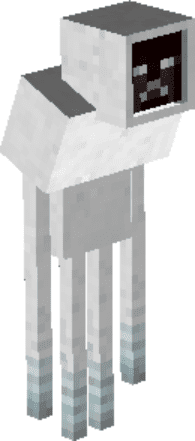
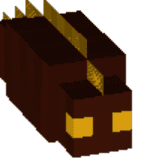
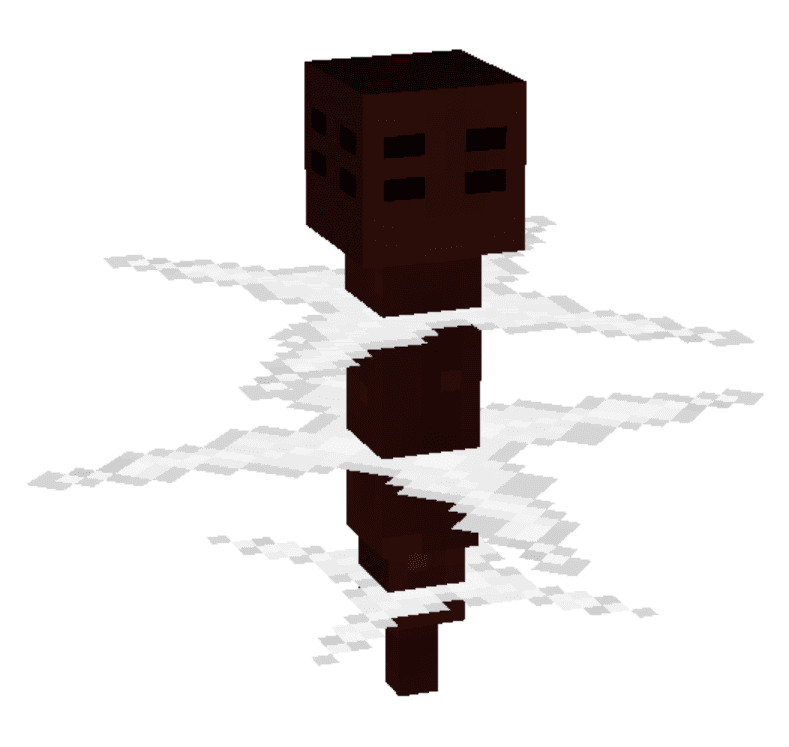
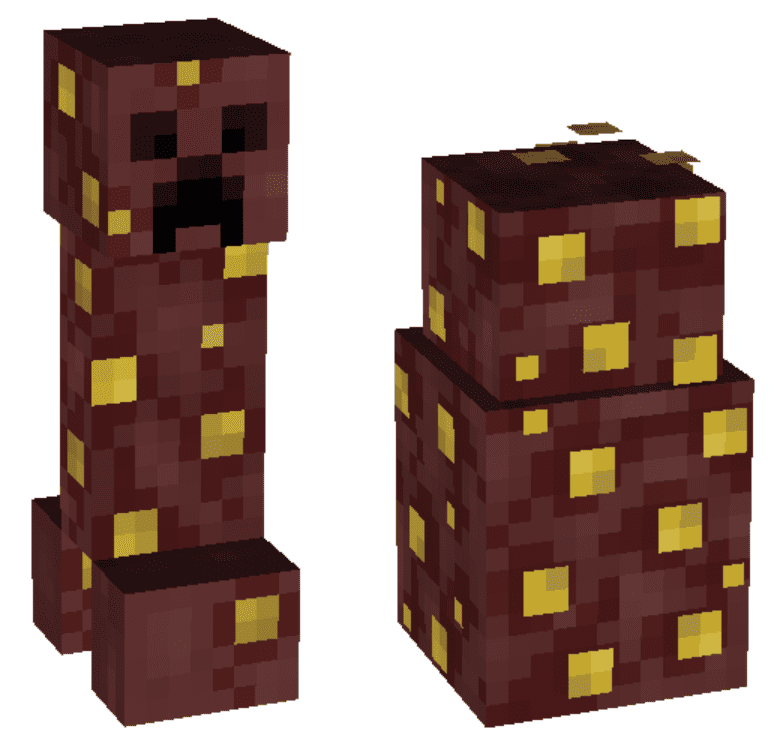
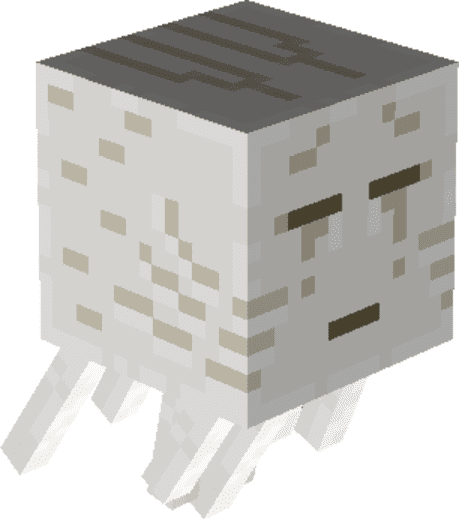
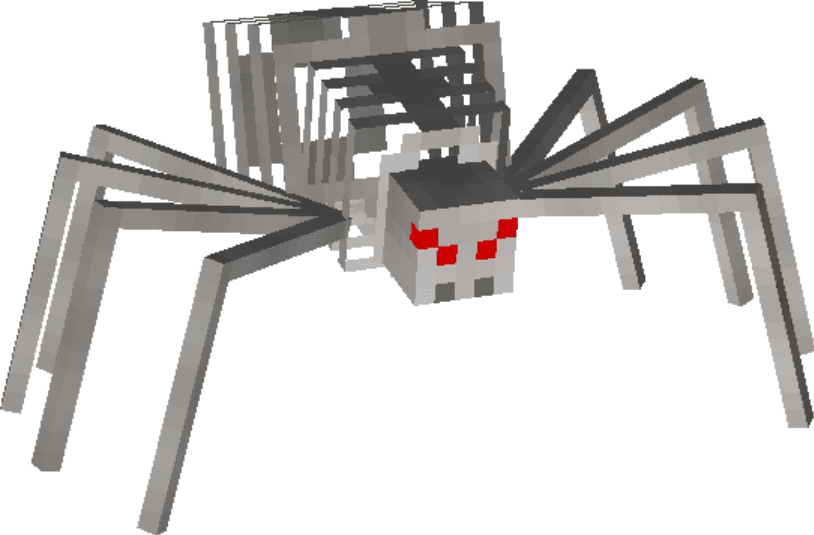
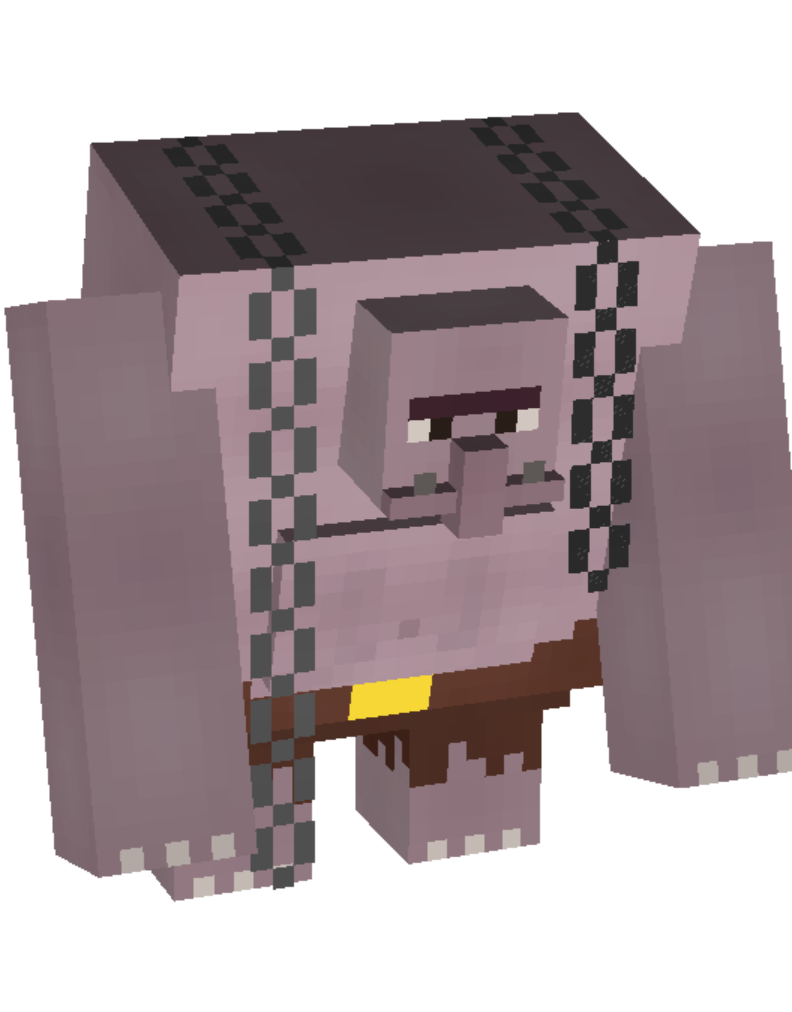
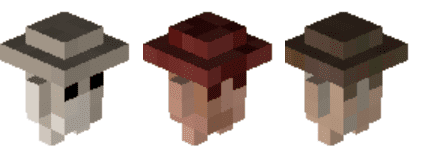

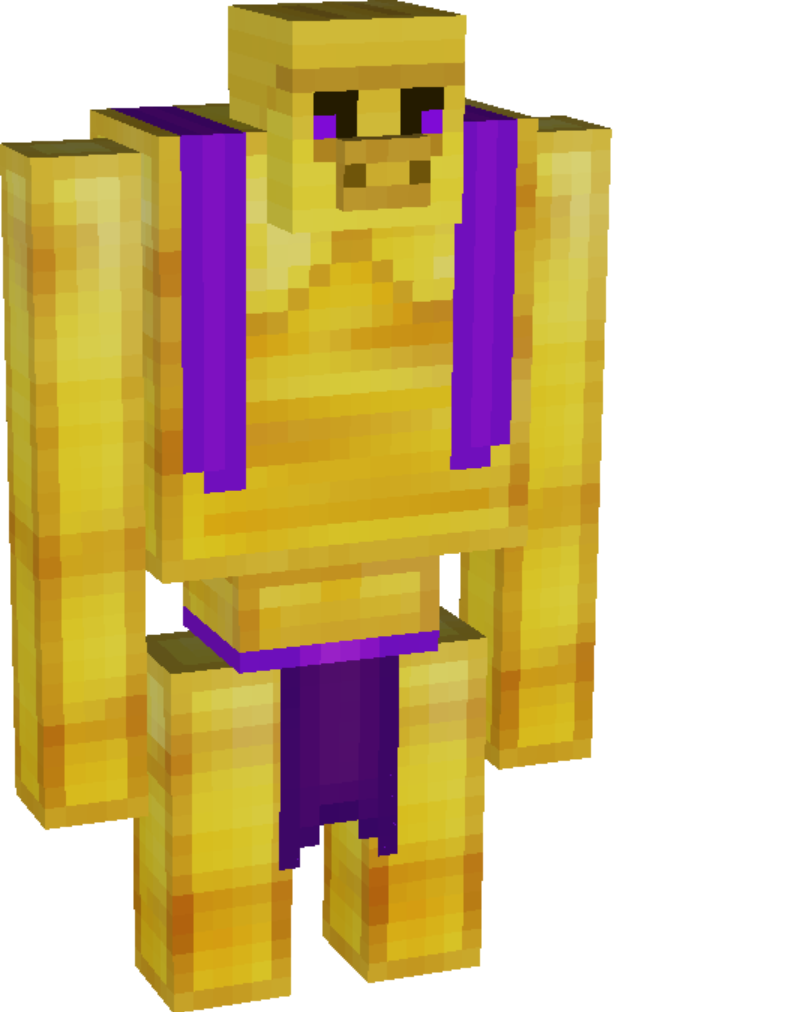
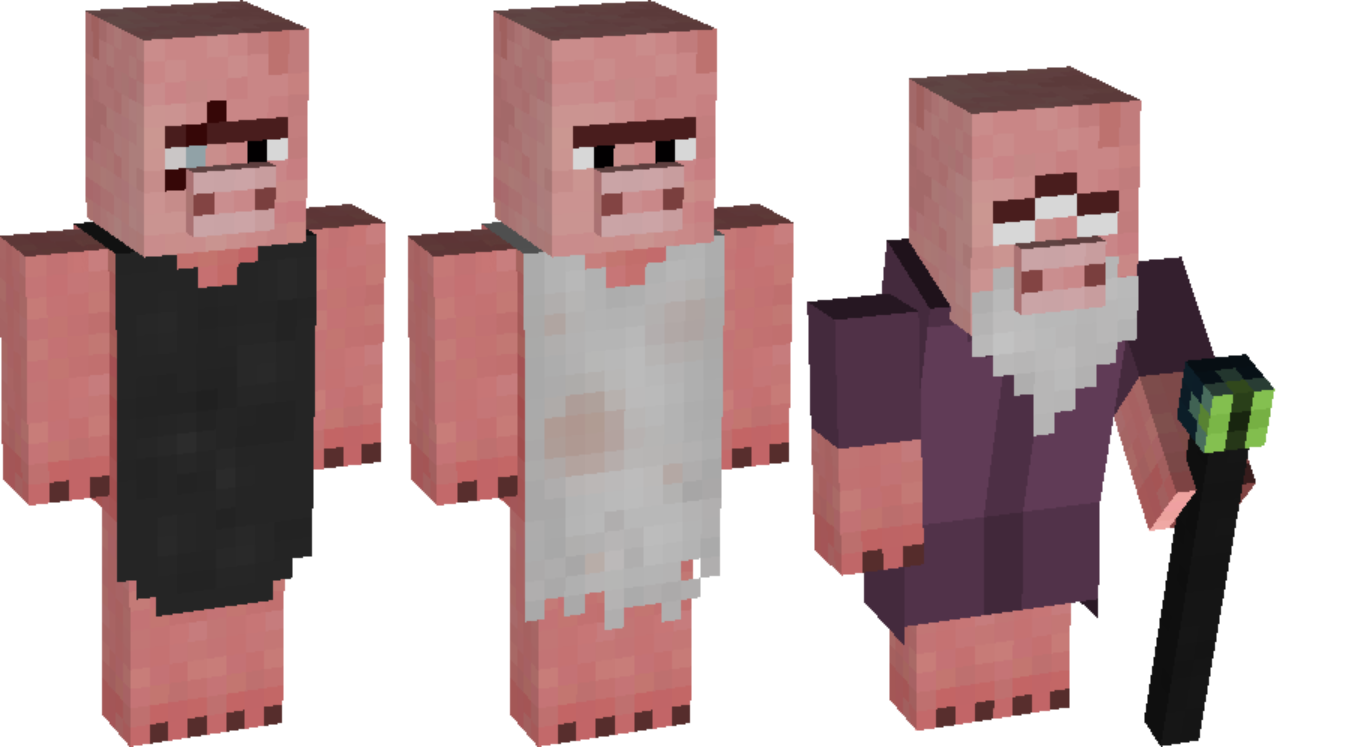
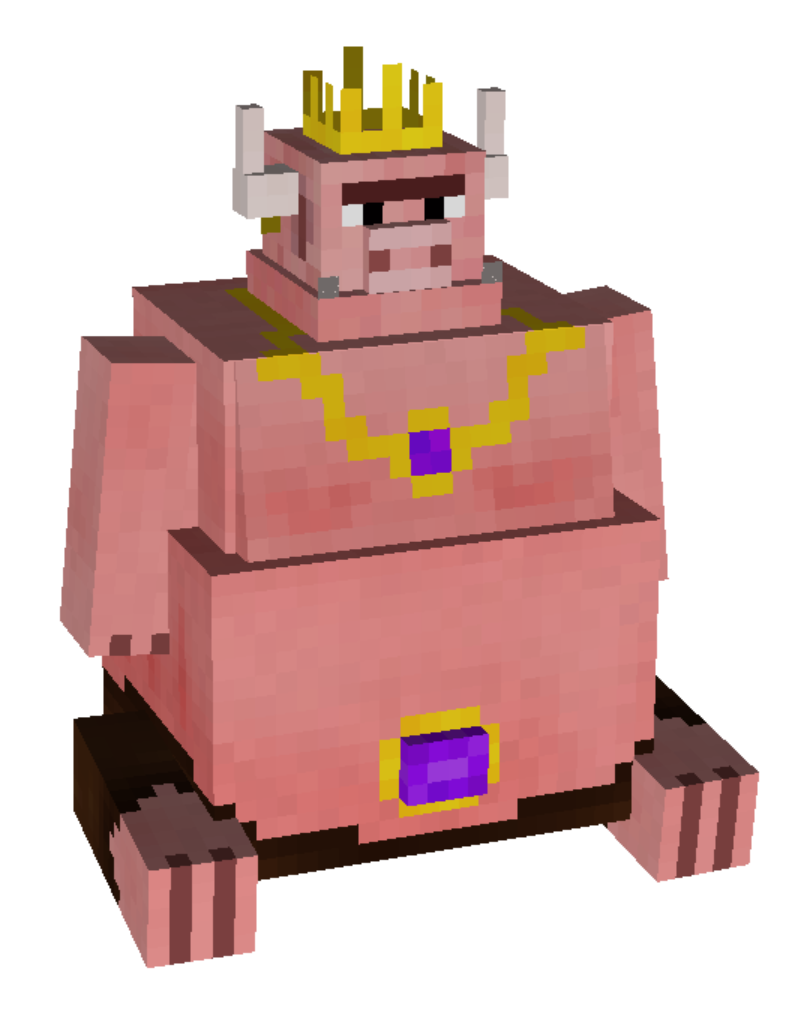
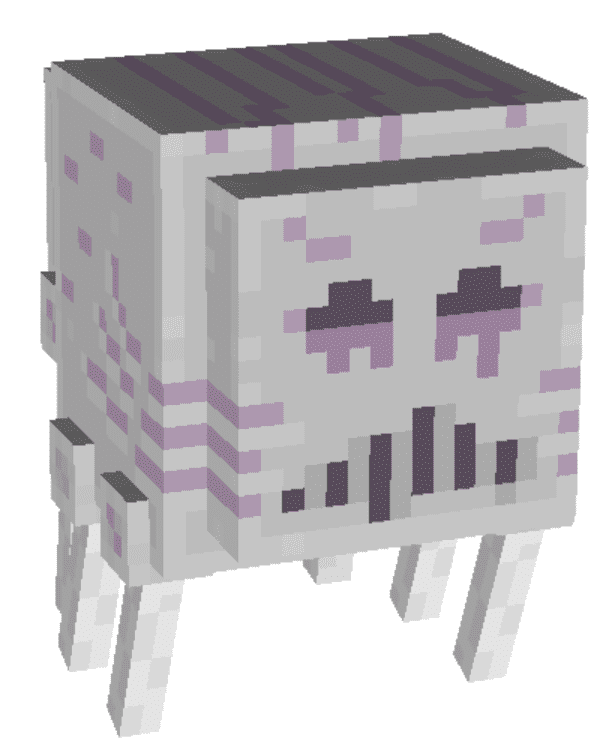
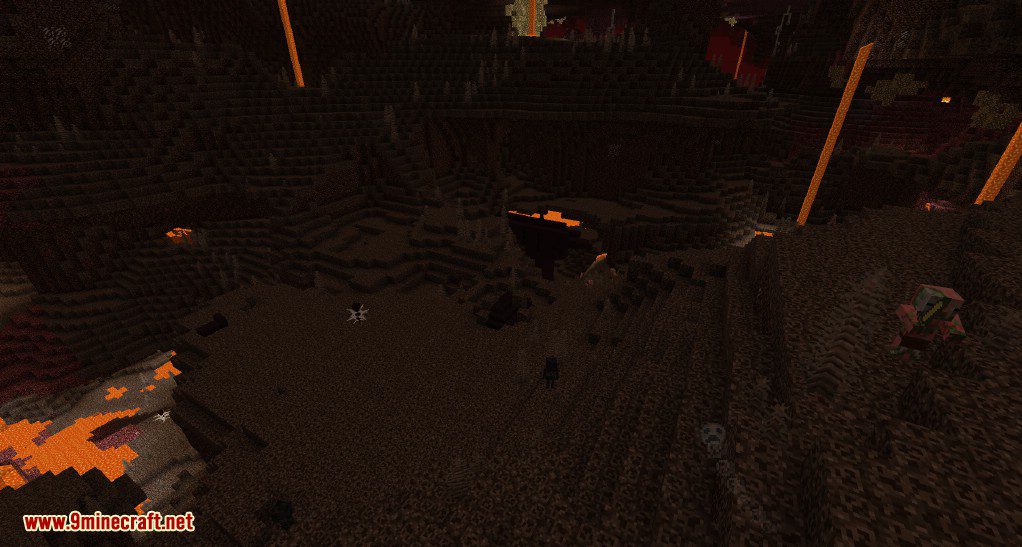
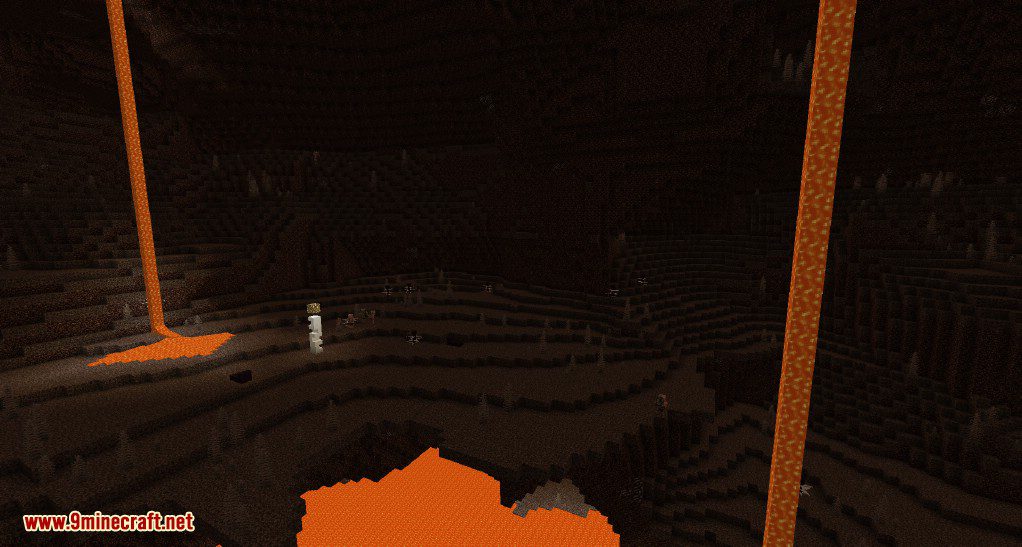
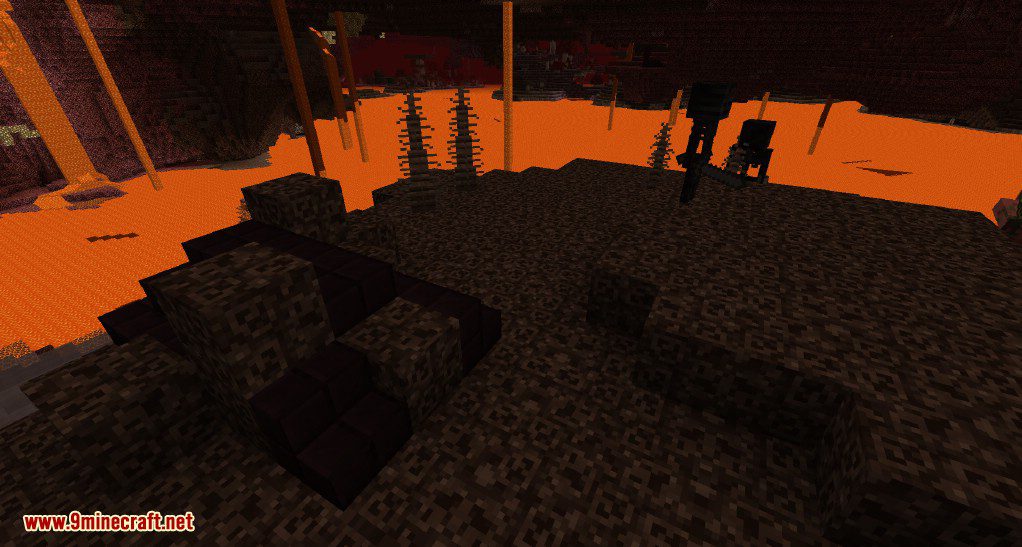
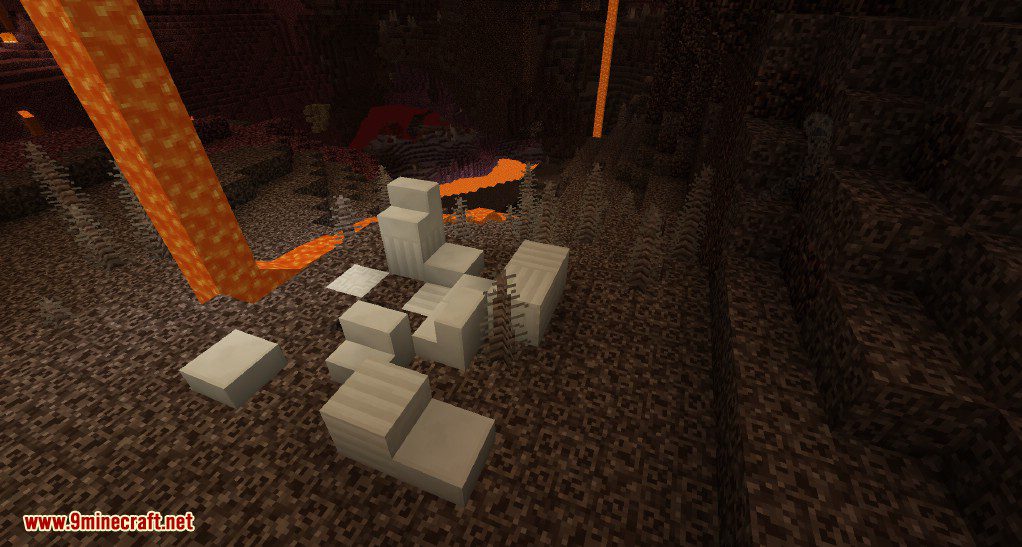
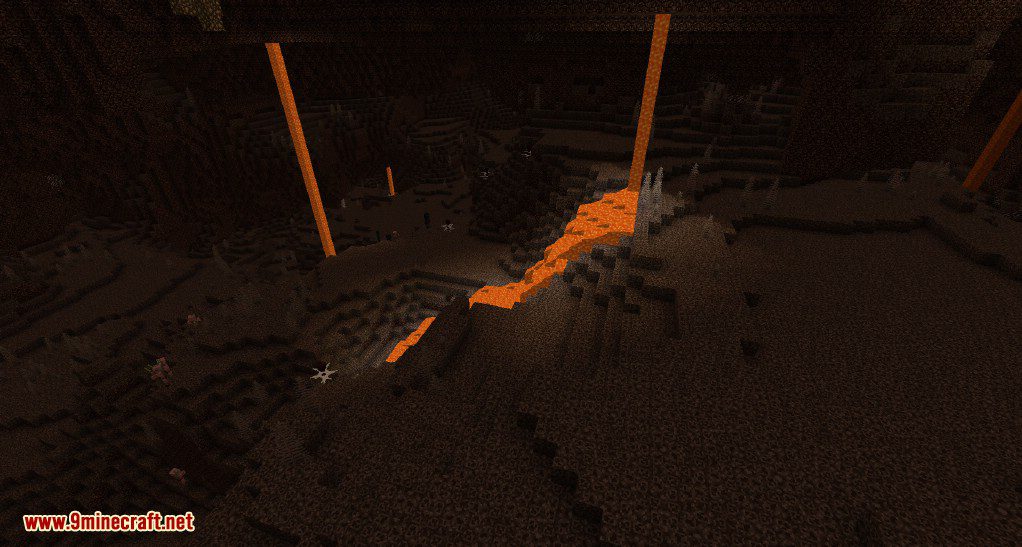
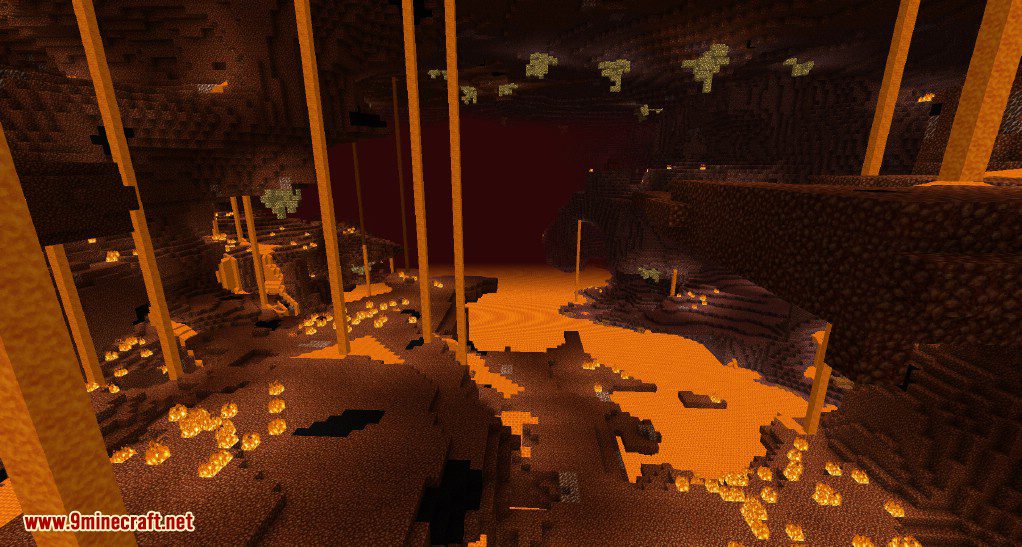
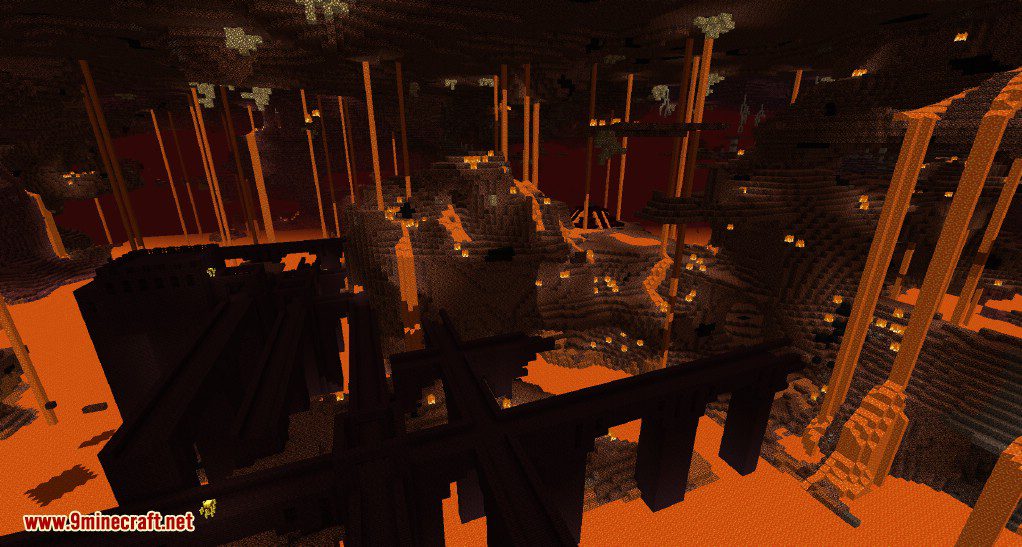
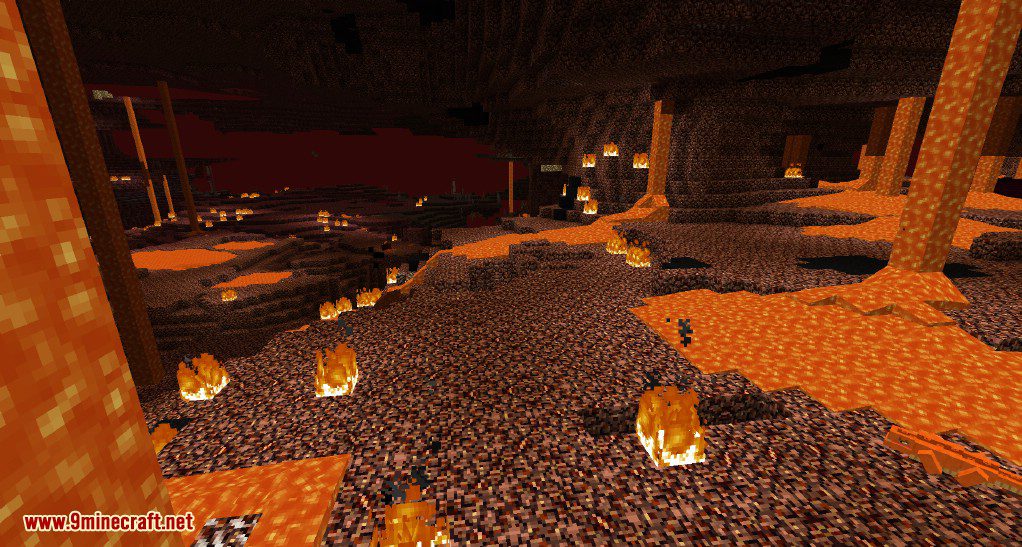
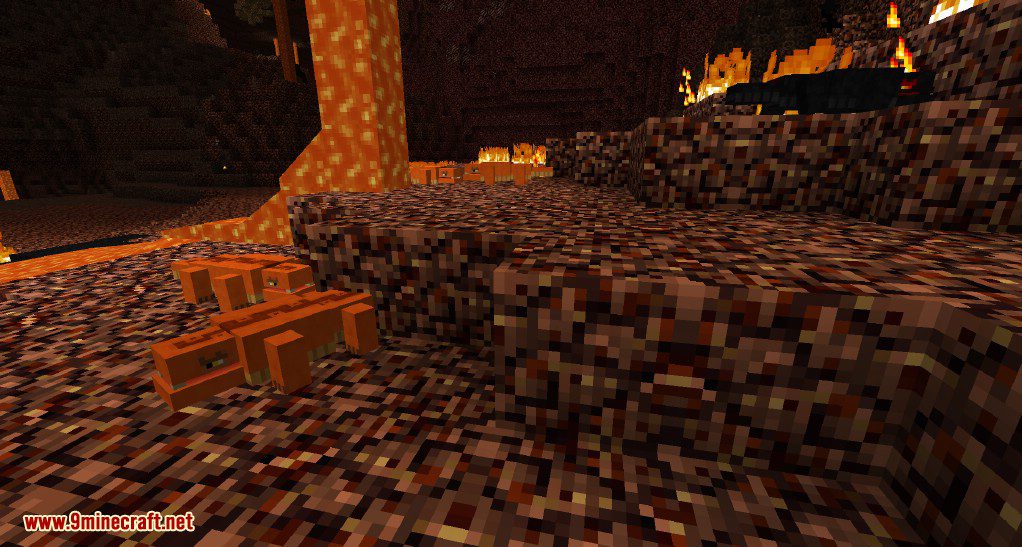
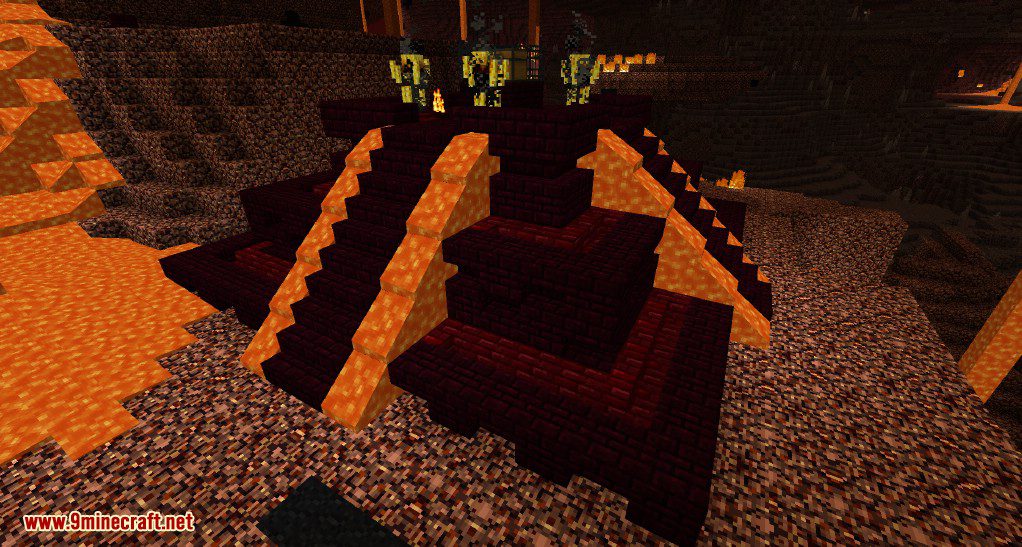
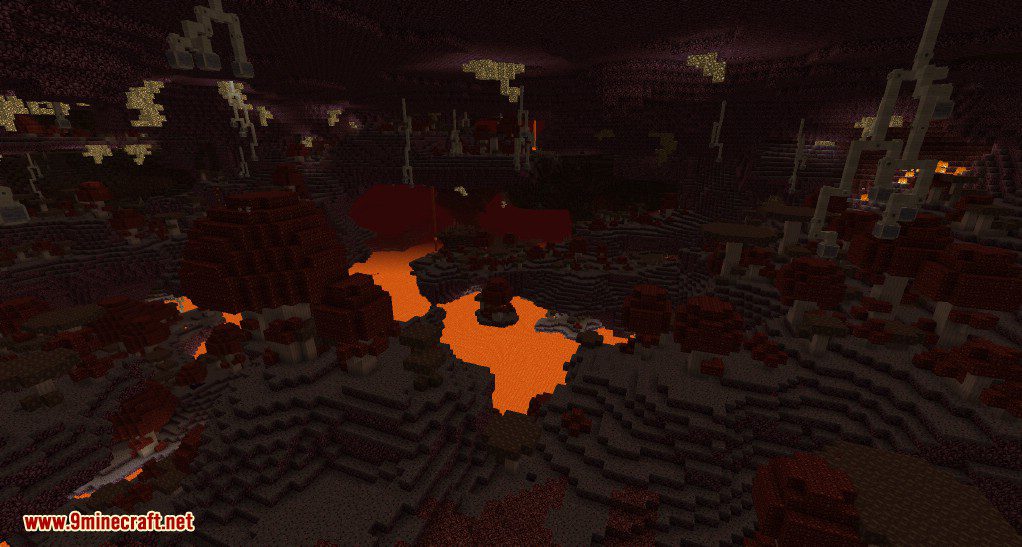
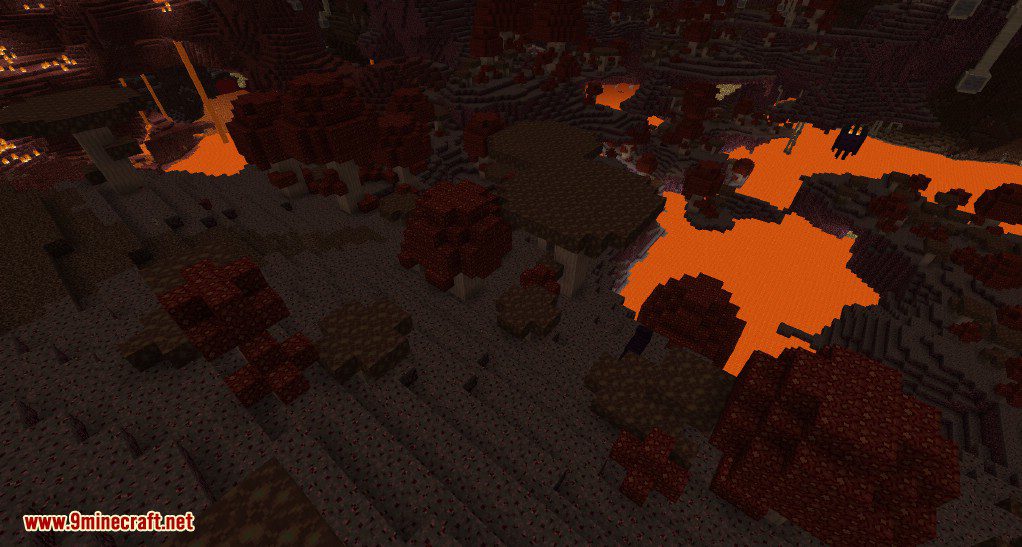
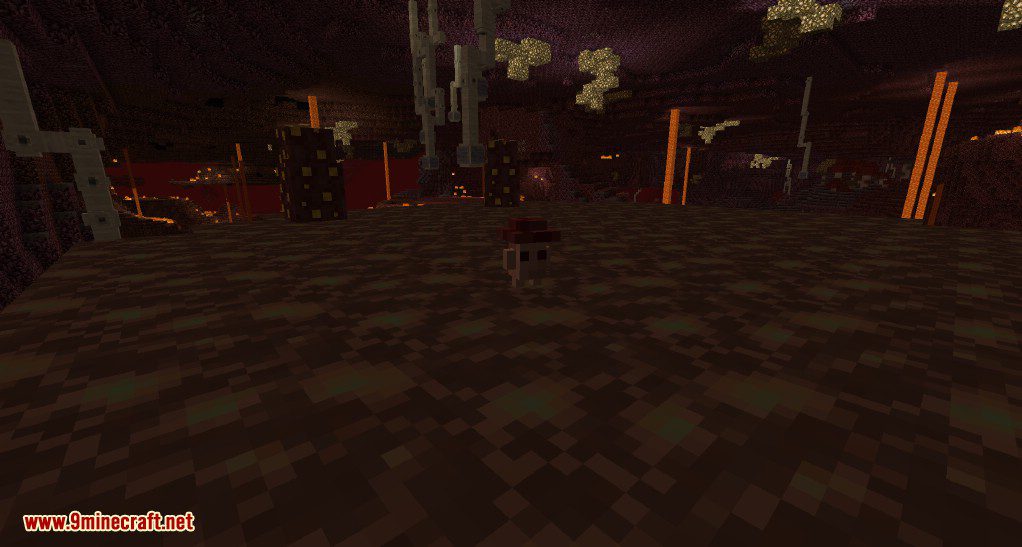
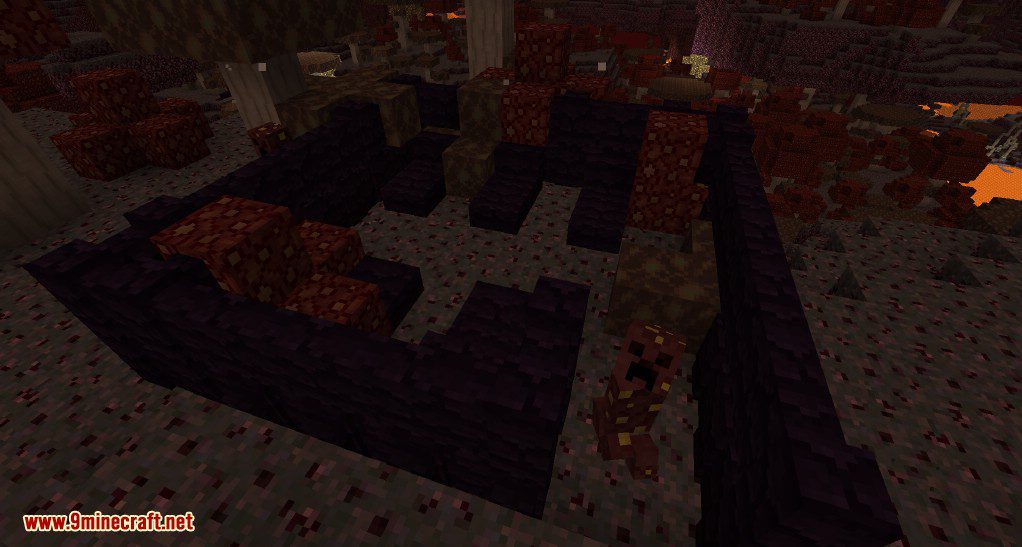
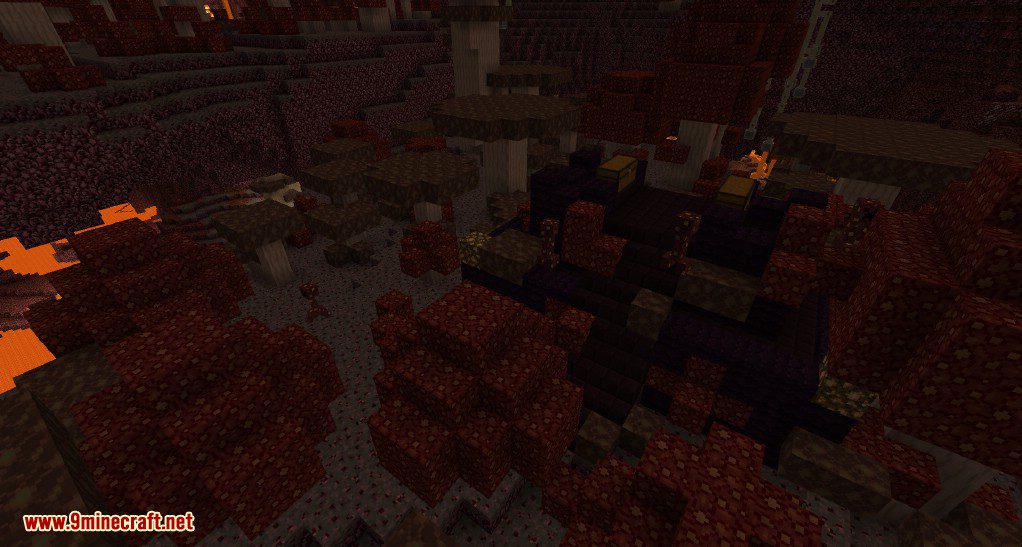
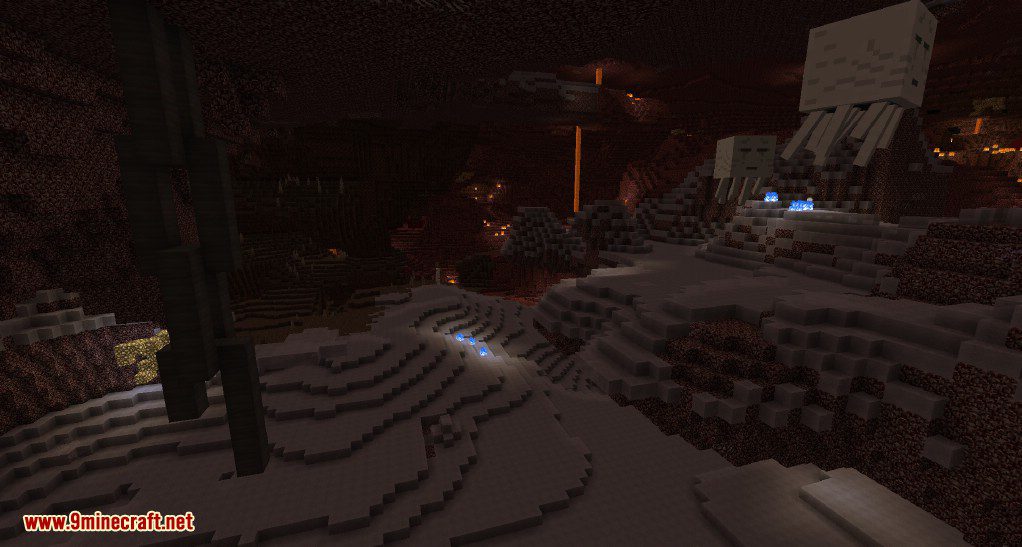
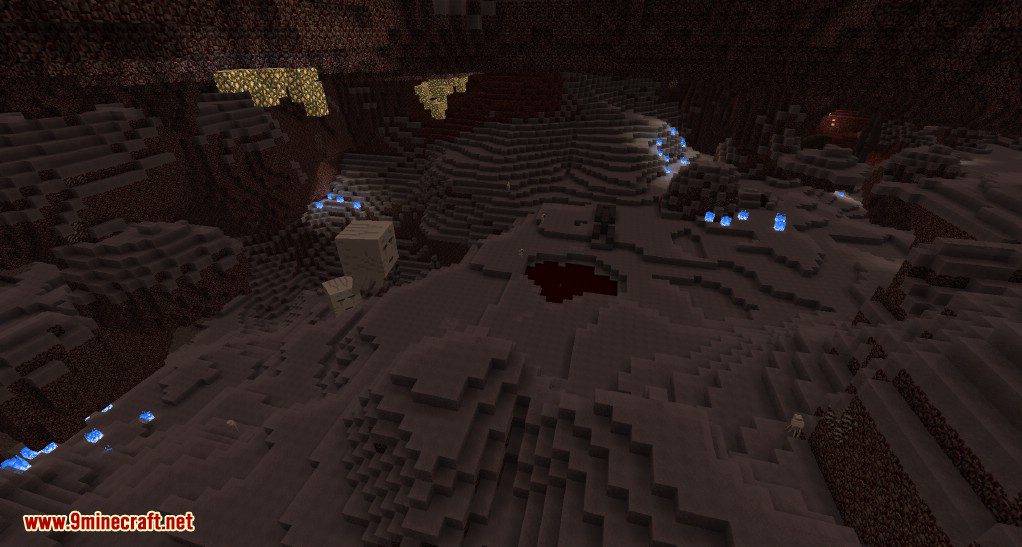
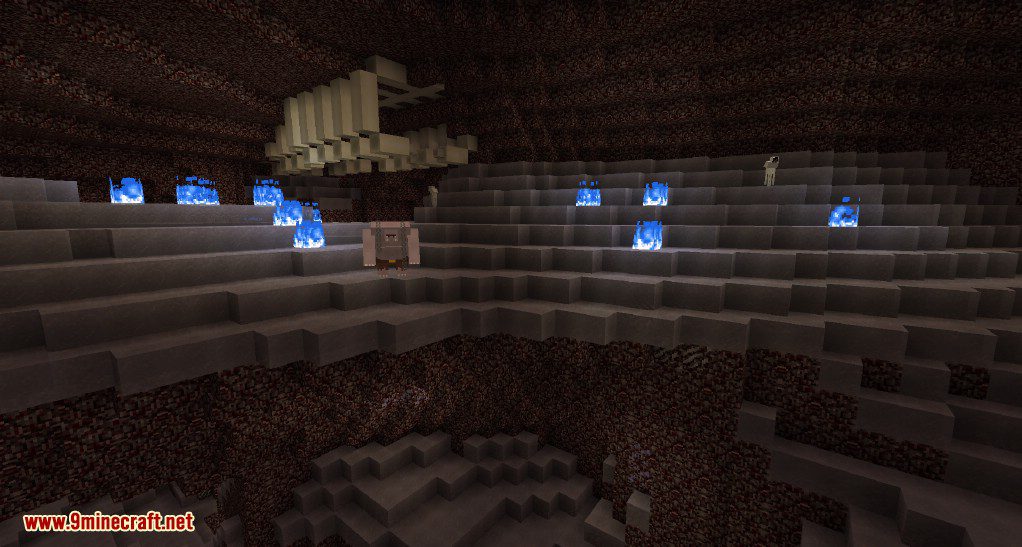
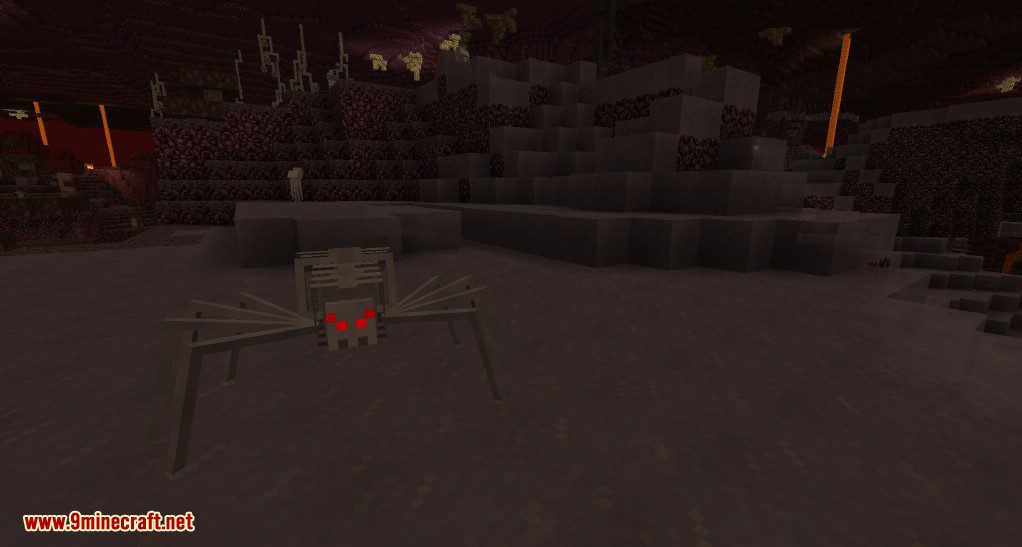
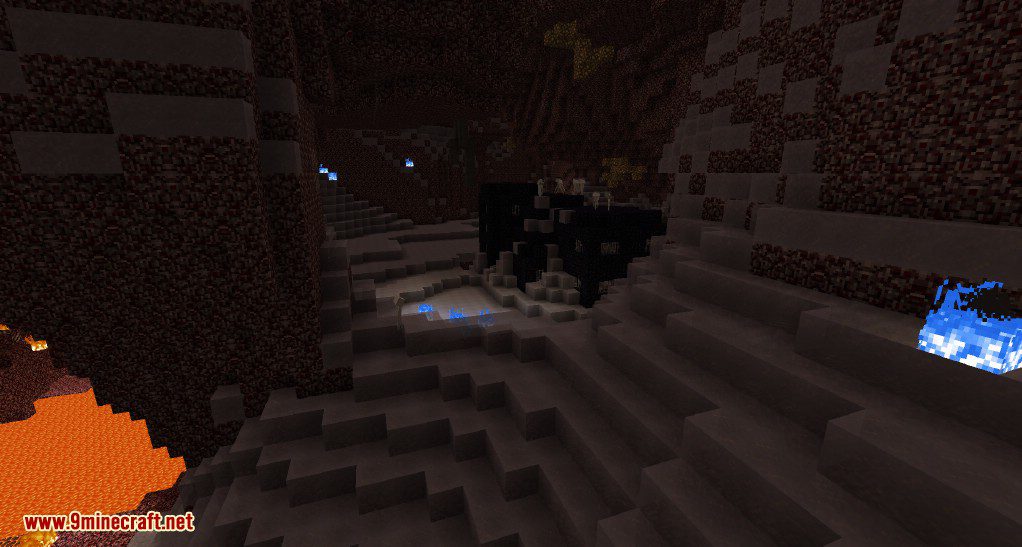
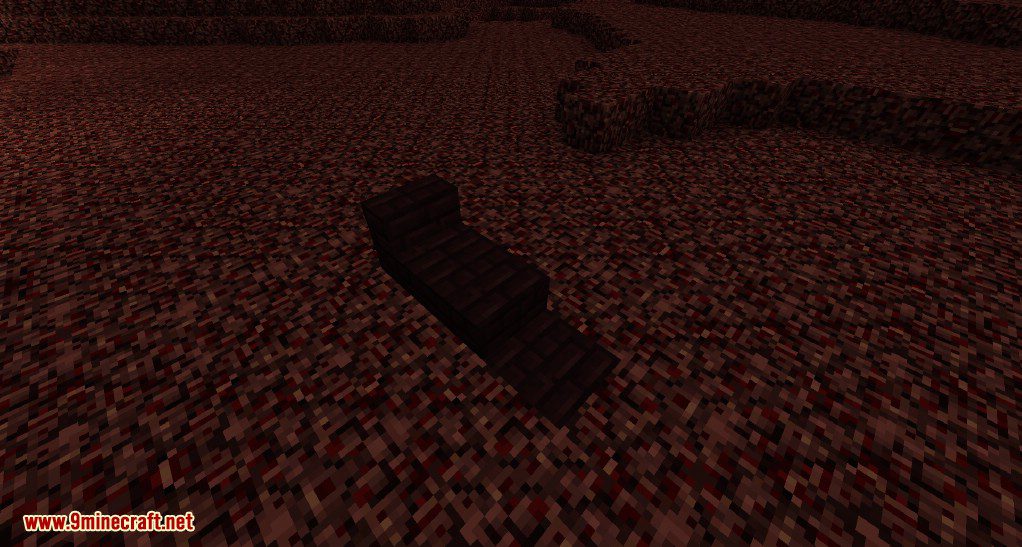
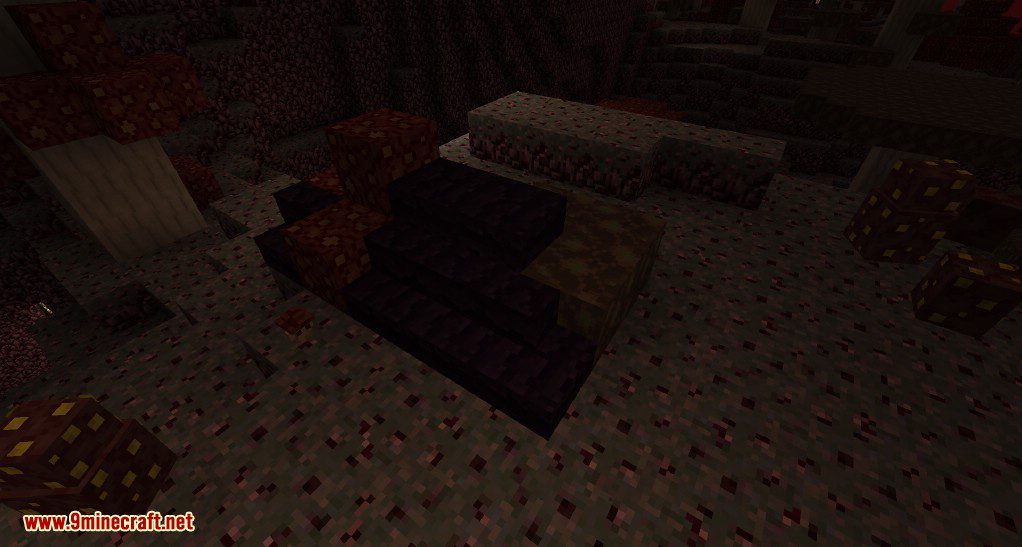
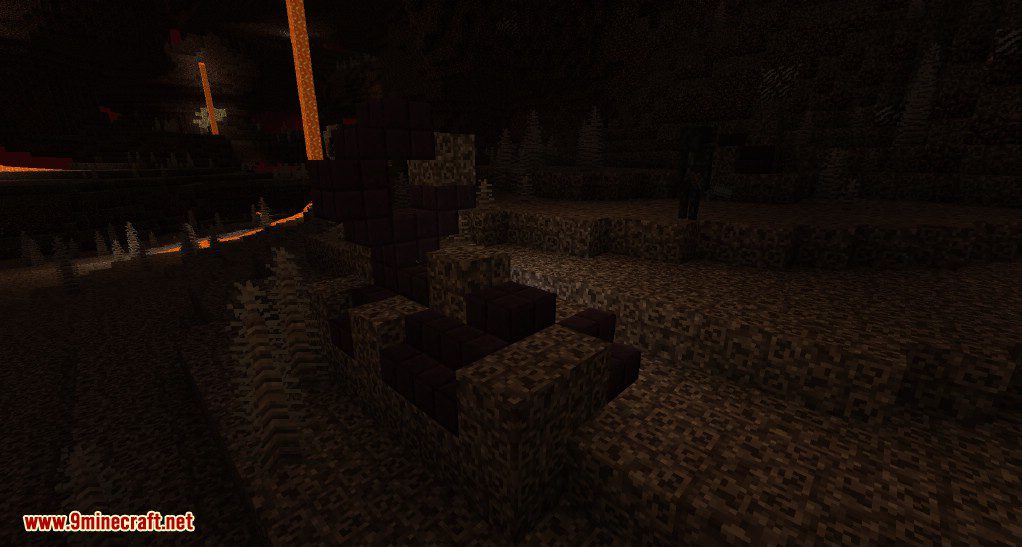
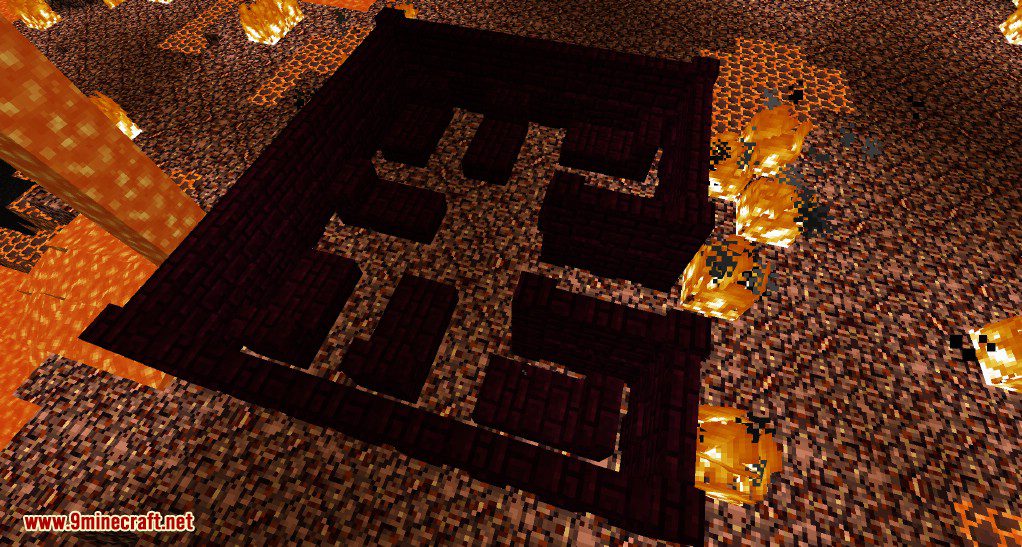
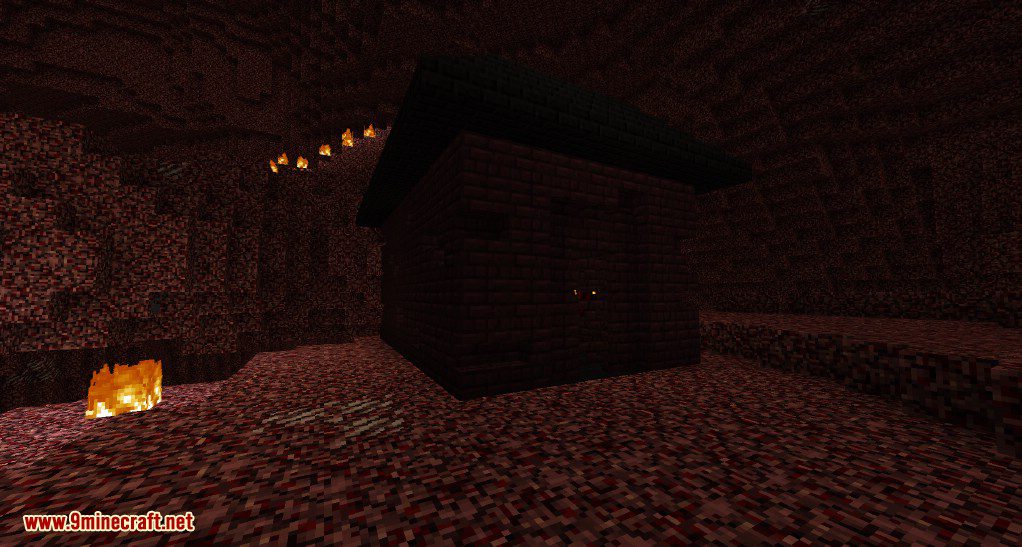
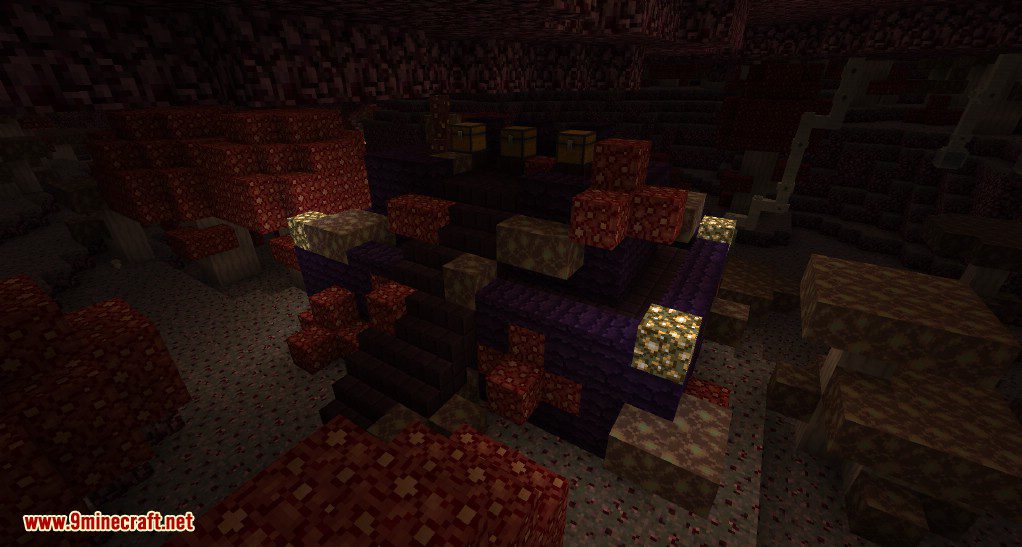
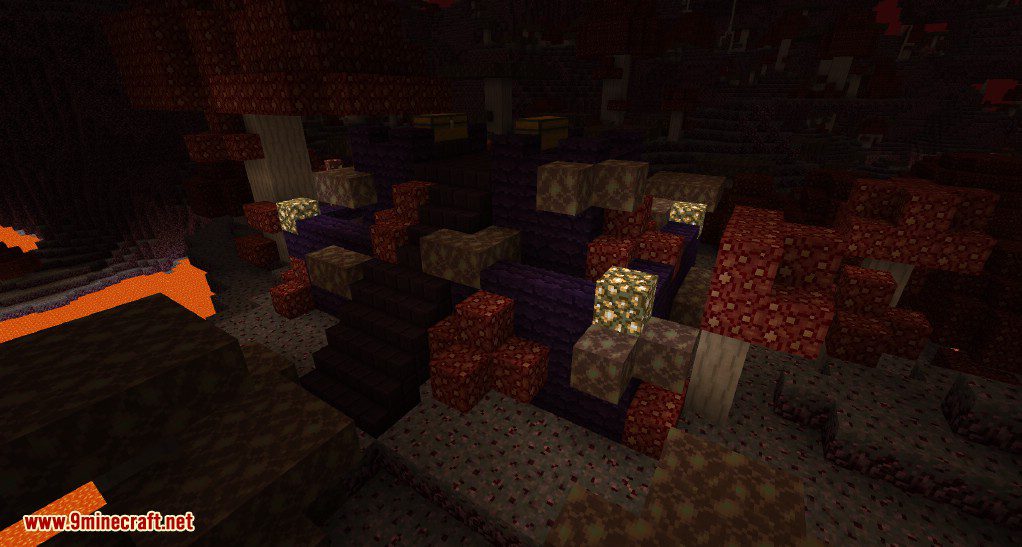
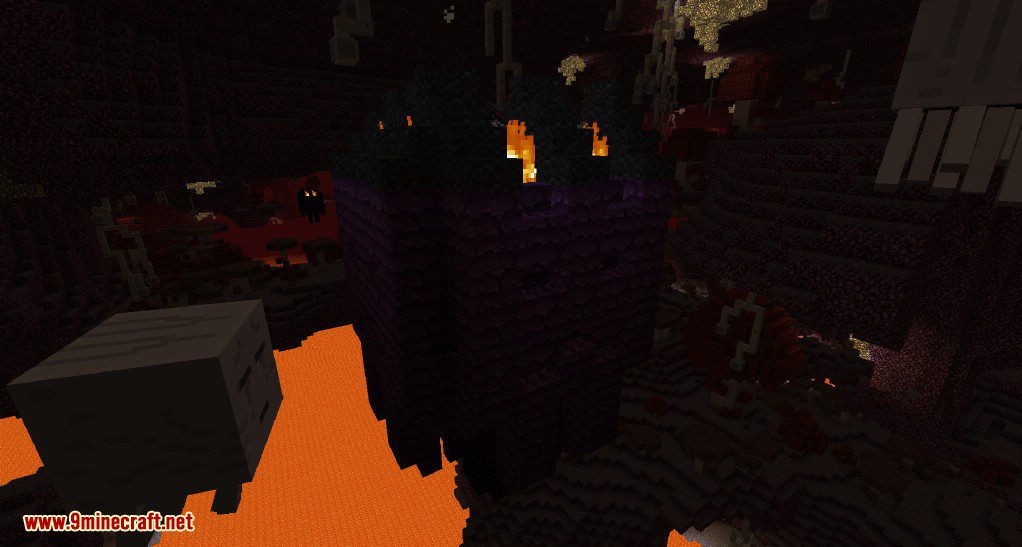
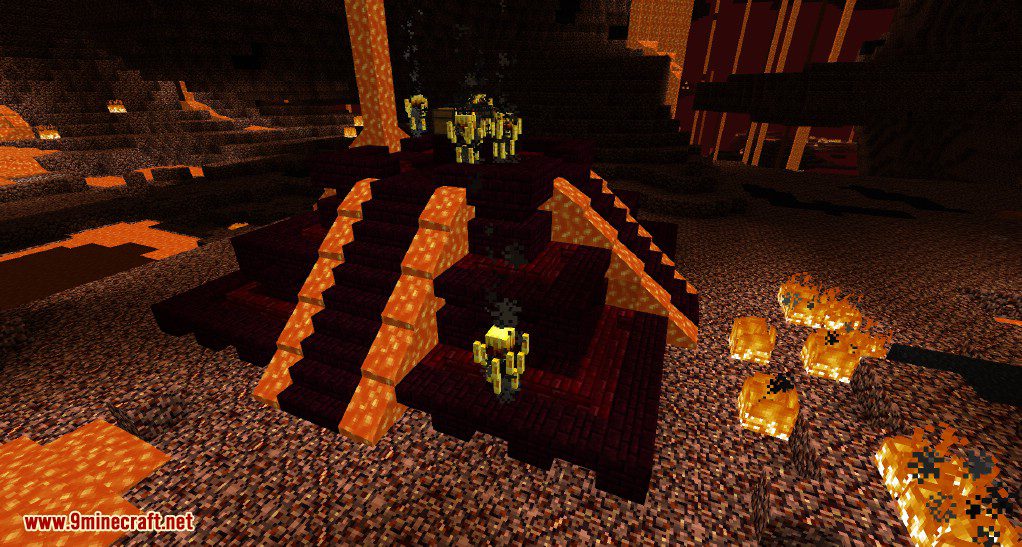
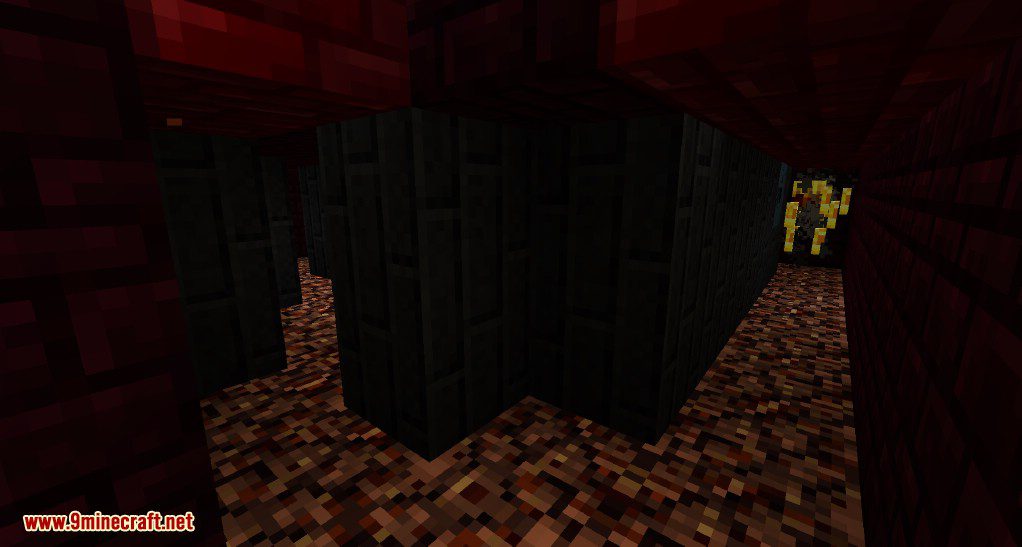
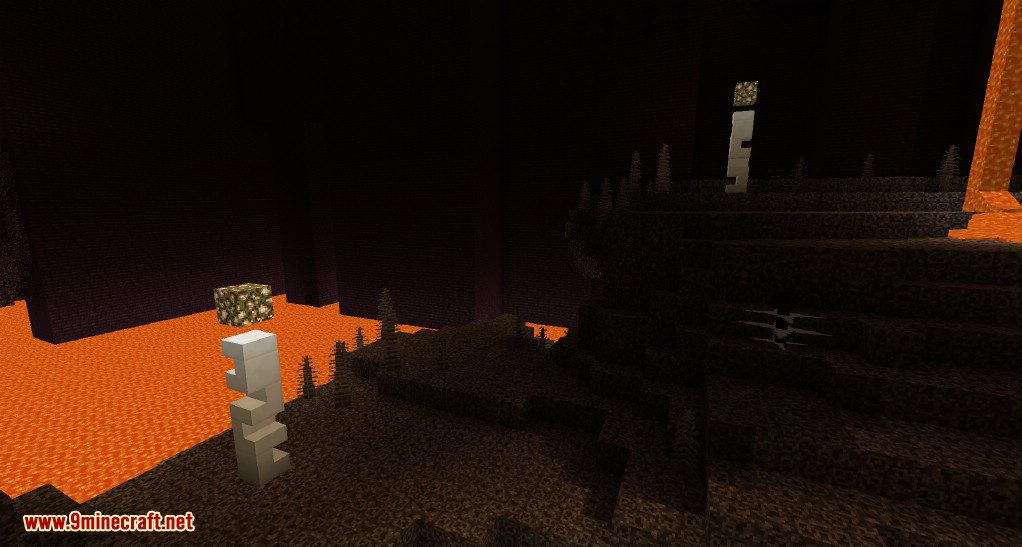
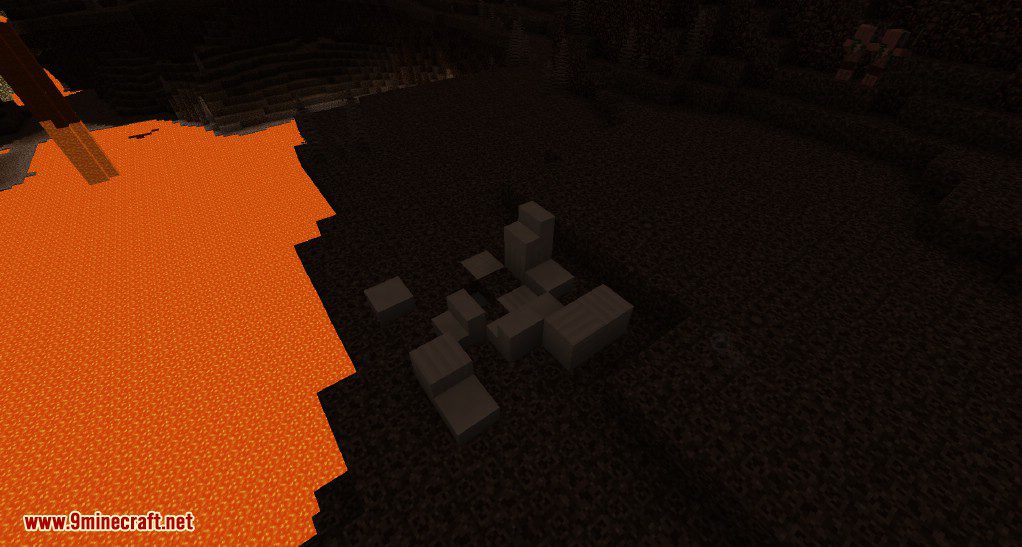
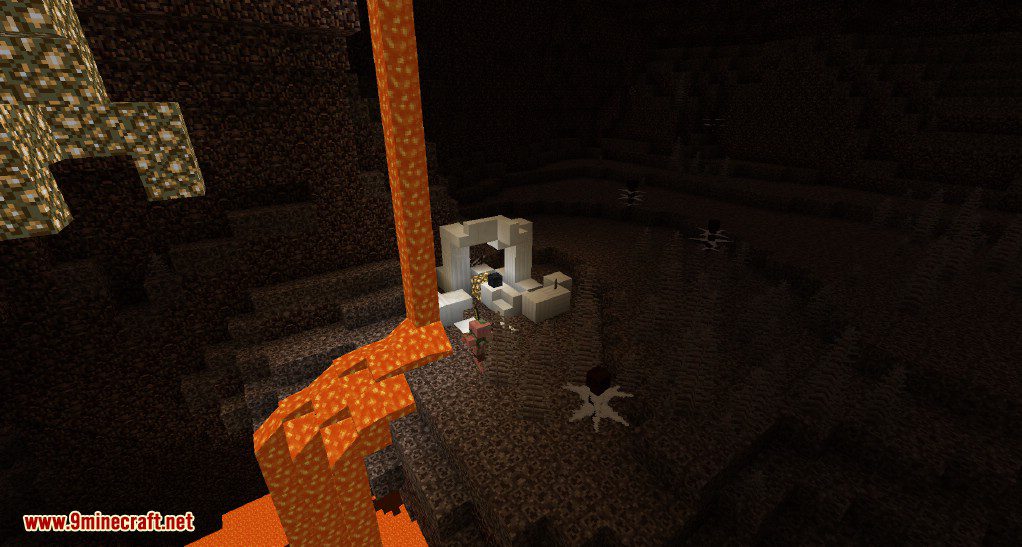
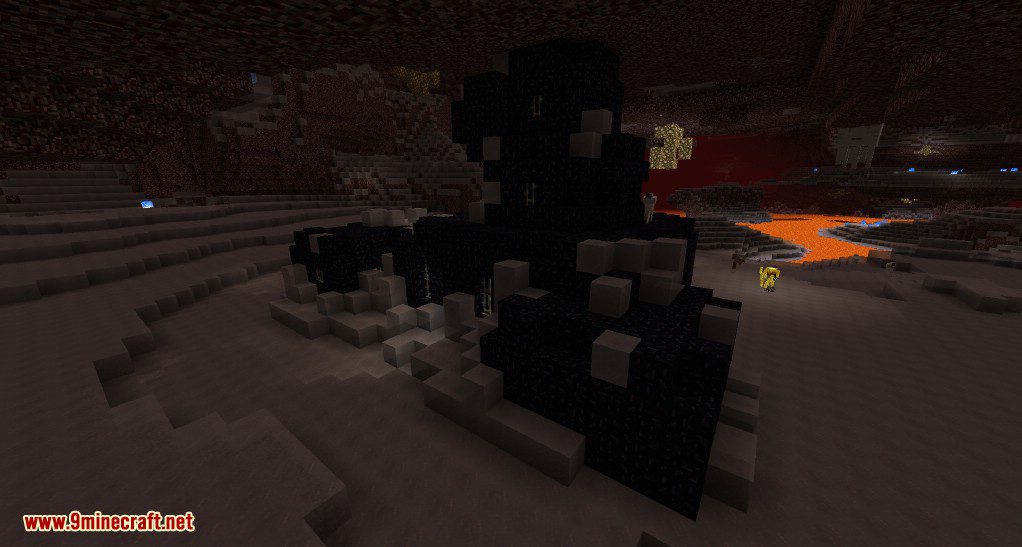
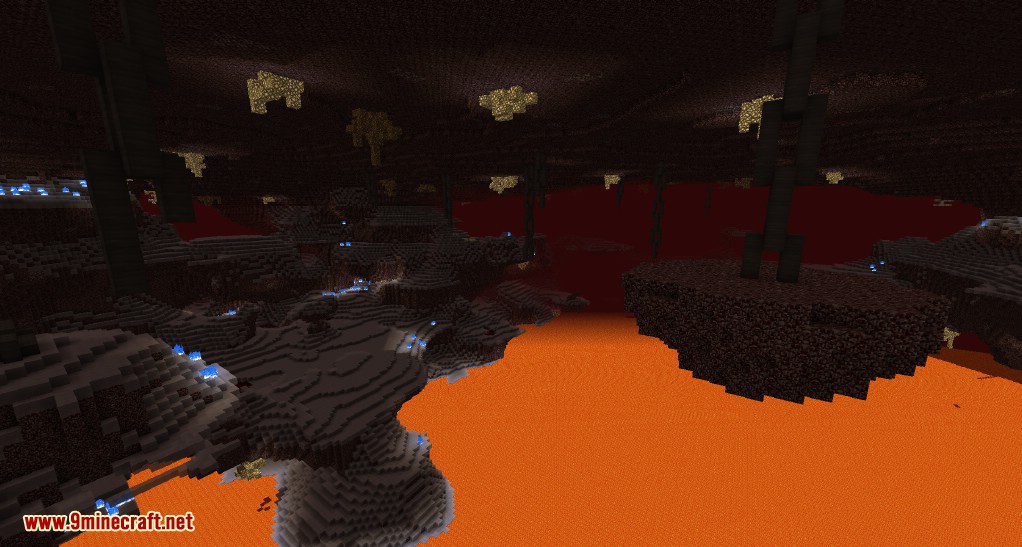
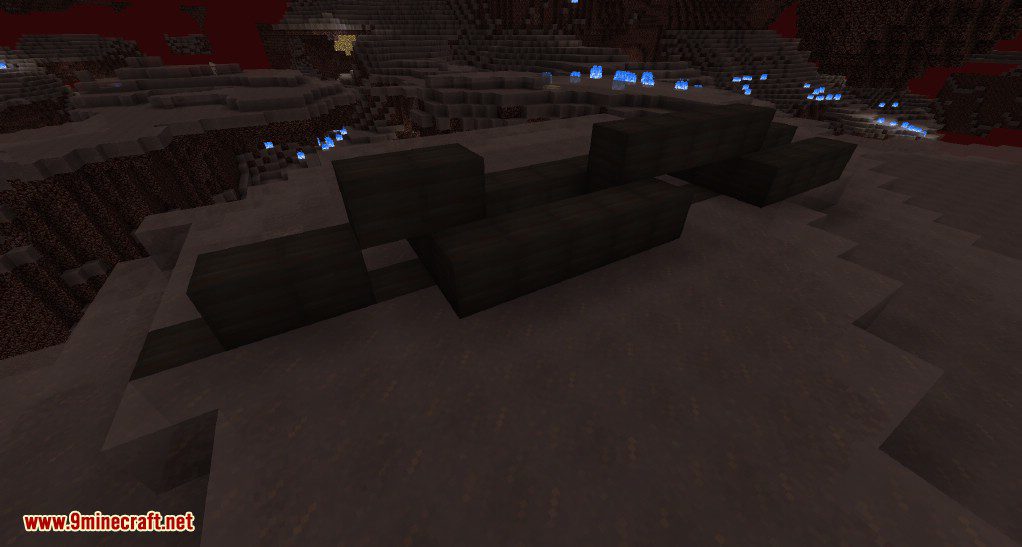
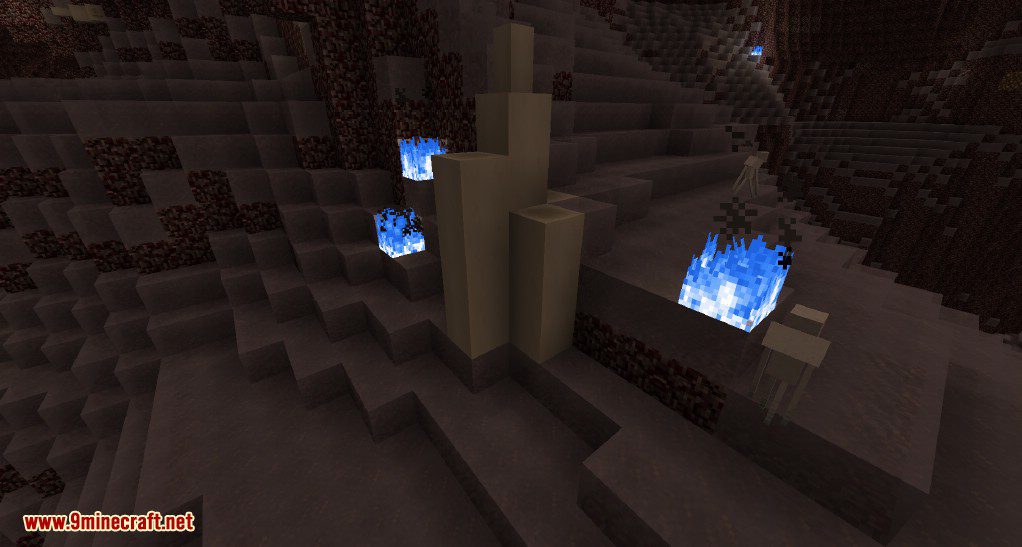
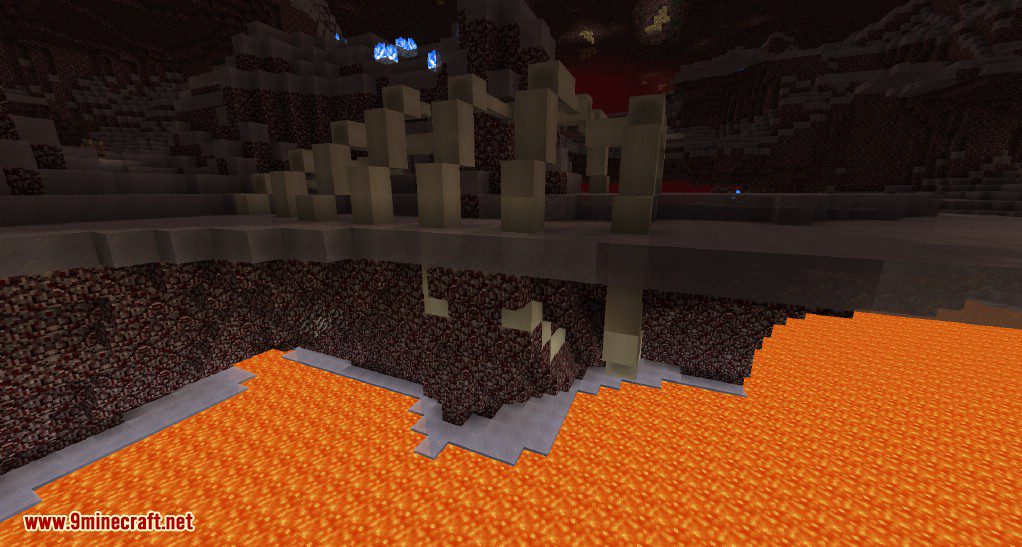
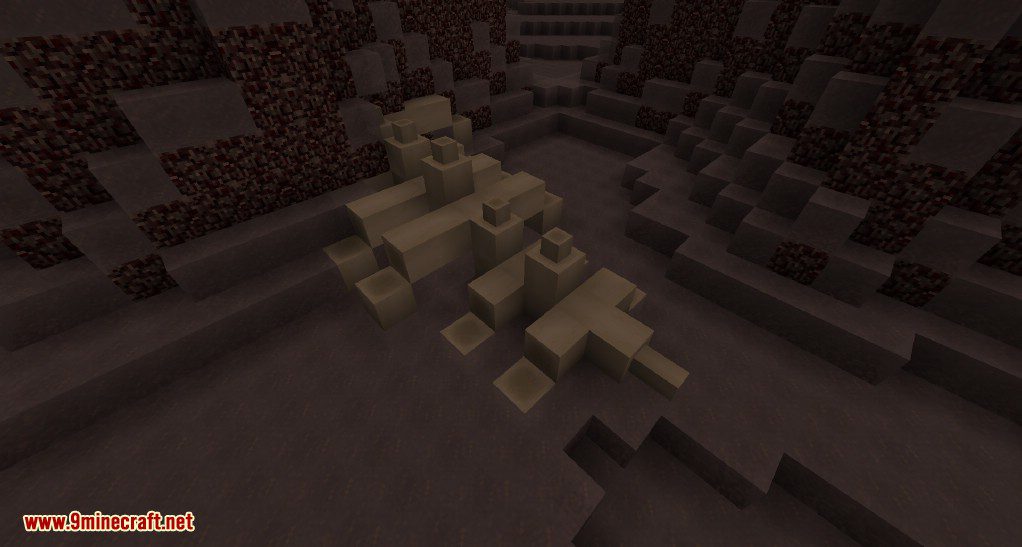
Requires:
LibEx (For Minecraft 1.12.2+)
How to install:
How To Download & Install Mods with Minecraft Forge
How To Download & Install Fabric Mods
Don’t miss out today’s latest Minecraft Mods
NetherEx Mod (1.21.4, 1.12.2) Download Links
For Minecraft 1.11.2
For Minecraft 1.12.1, 1.12
For Minecraft 1.12.2
For Minecraft 1.14.4
For Minecraft 1.15.2
For Minecraft 1.21.4
NeoForge version: Download from Server 1 – Download from Server 2
Fabric version: Download from Server 1 – Download from Server 2
Tags:
YOU MAY ALSO LIKE...
